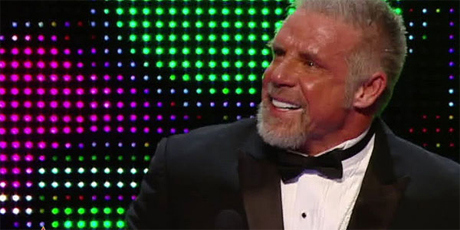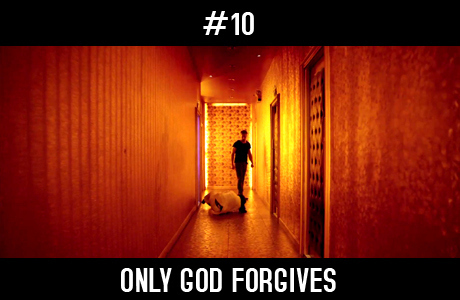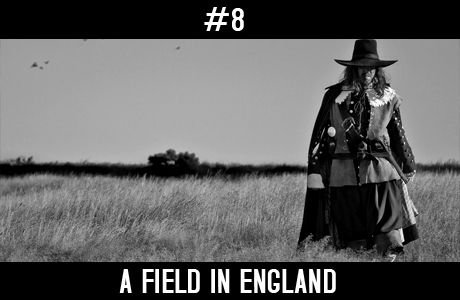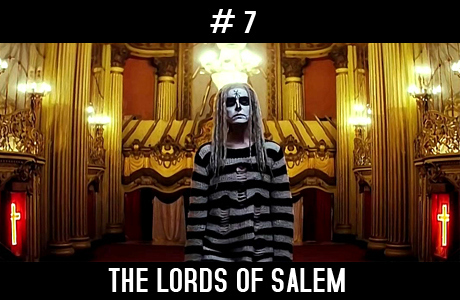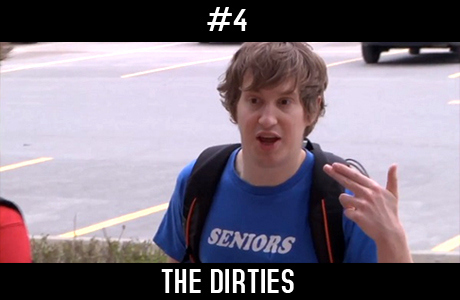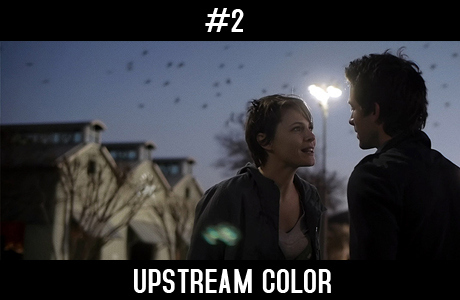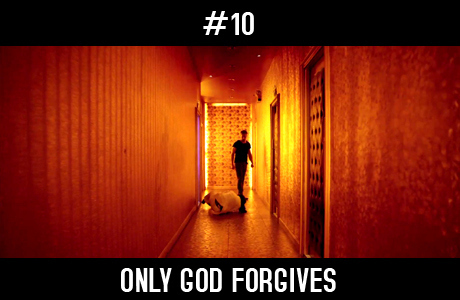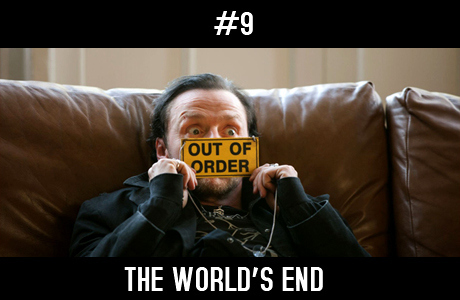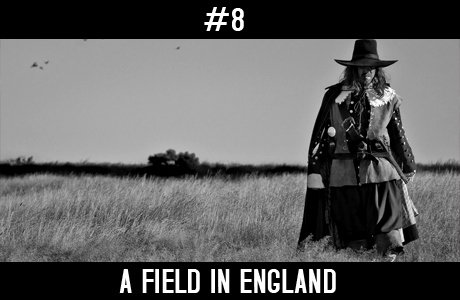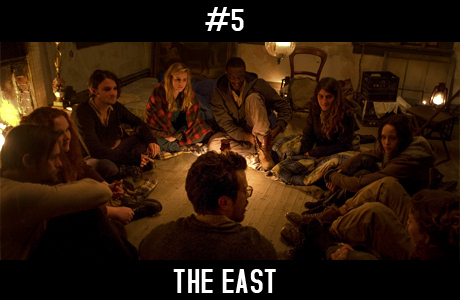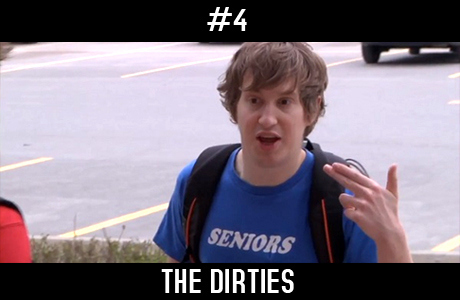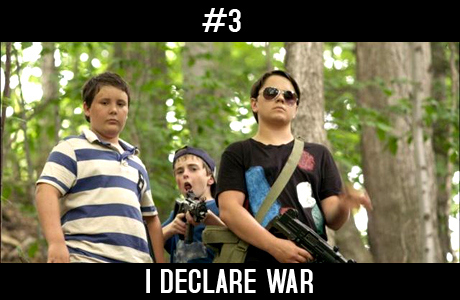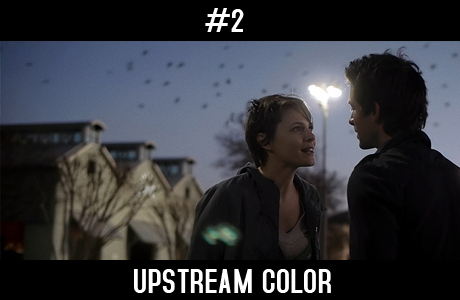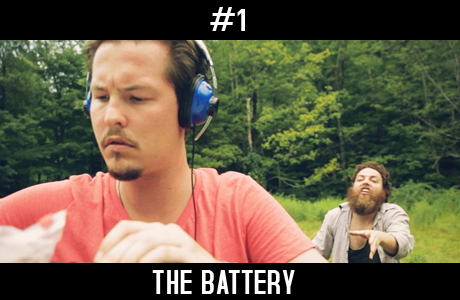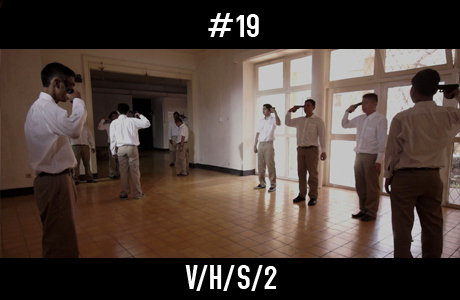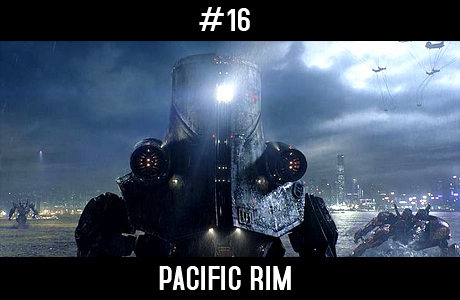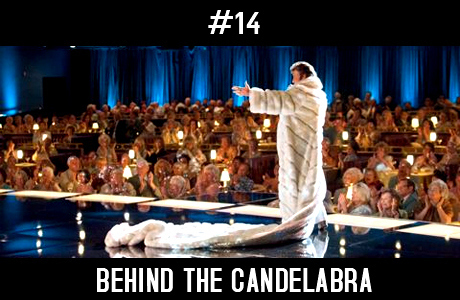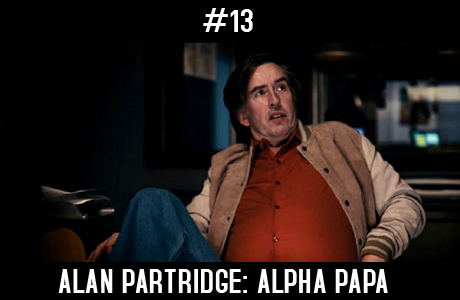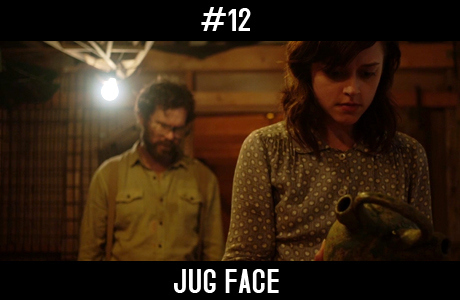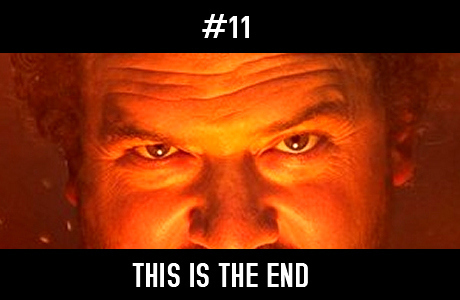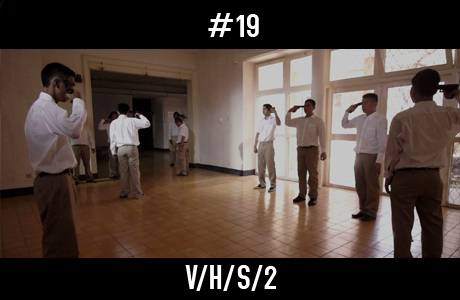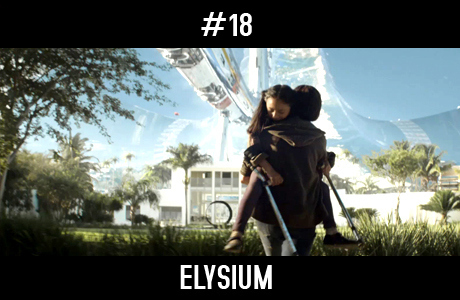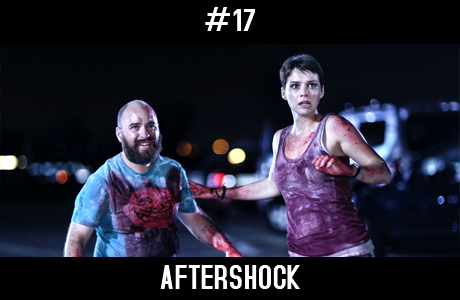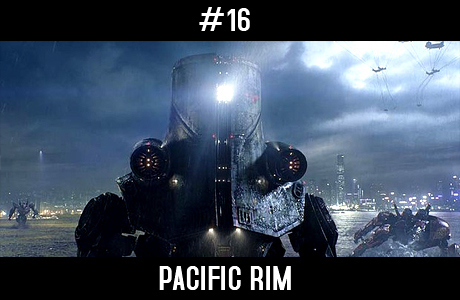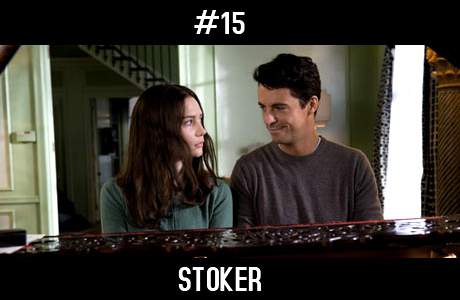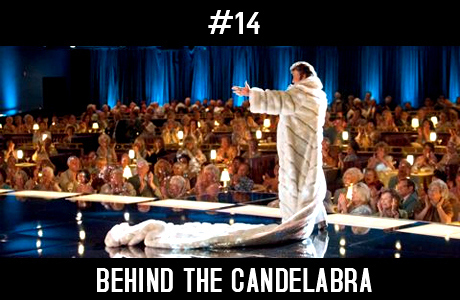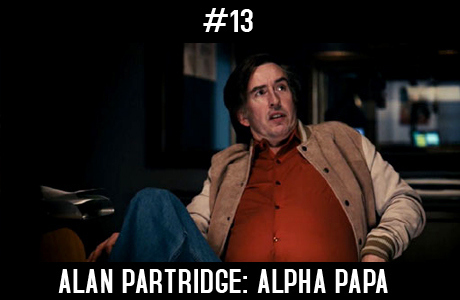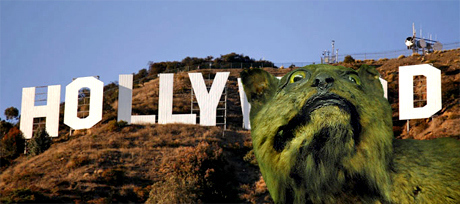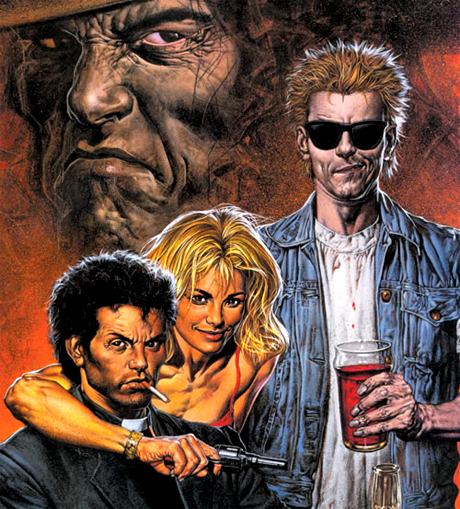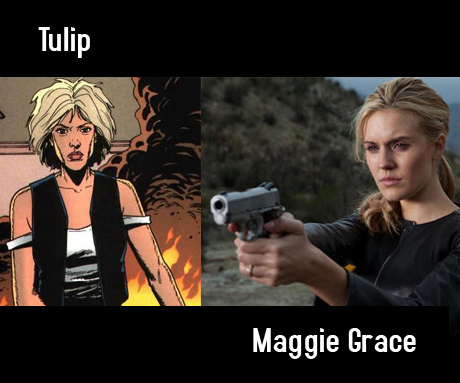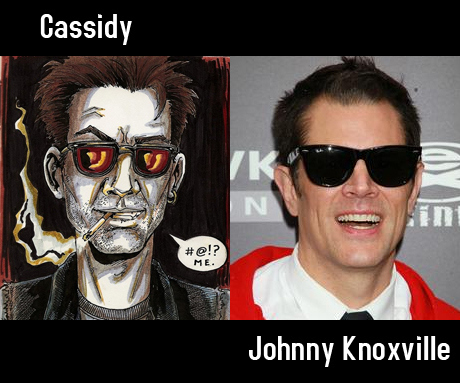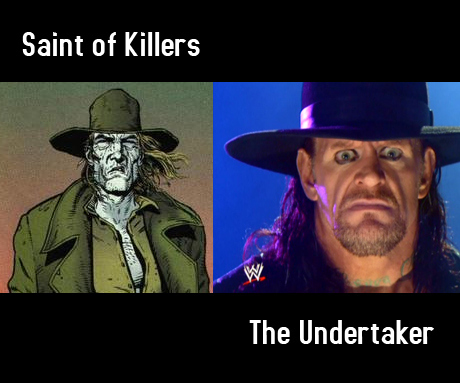Stuart Millard's Blog, page 32
April 9, 2014
Always Believe: Warrior 1959 – 2014
As a child, I could often be found sprinting around the house with coloured shoelaces tied to my arms, beating my fists against my chest, as I mimicked my idol, the Ultimate Warrior. What was he, anyway? Space philosophiser? Ancient Mayan deity? Escapee from one of Charles Manson’s peyote trips? That’s what was so great about the Warrior; he belied comparison, in a cartoon landscape where gimmicks were easily definable in a few words or less. Jovial fat sailor; puffing barber; real-life giant; coked-up symbol of God-fearing Americana. But Warrior? Warrior was some crazy alien who’d crash-landed into our planet like a meteor and clawed his way out of a crack in the desert to fry our undeveloped human brains.
A startling combination of cosmic sixties beat-poetry and eighties self-help aggression, his promos involved snorting, talking into his hands, and breathlessly spouting thesauric fairytales of cod-mysticism and old gods, in one of his two speaking volumes; purple-faced yelling or a throaty stage-whisper. Should future civilisations unearth tapes of 1980′s WWF, between the acid-cowboy dervish of Randy Savage, Hogan’s bug-eyed non-sequiturs, and these three-minute bursts of biblical concept album performance art, they’ll think that Erich Von Daniken was probably onto something. Even amongst that company, Warrior’s interviews stood out as notably insane. Asked to do an impersonation of a wrestler, most people would shout “Next week, I’ll kick your ass!” into an imaginary camera, but his most infamous, to build up the most iconic match of his career, revolves around his daring “Hul Ko-gan” to hijack and crash a plane, as a means to testing his mettle. With its strangely measured cadence, it plays like Brando’s speech in Apocalypse Now, and increasingly in the era where teams of writers hand WWE performers a script before they give them the mic, it now feels like something we all dreamed.
An enigma in every way, truly he was the product of his billed hometown, Parts Unknown, and the term ‘larger than life’ has never been more apposite. How could someone like that even be real? Looking at him when you were kid, with muscles so swollen that his body was a criss-cross of pulsating veins, and with things — tassels, boots, hair — rippling in his wake as he blustered through our world, you felt he belonged in the pages of a comic book. So strong was this mythic status, that when he returned after the steroid scandal, many pounds lighter and with a new haircut, there was playground talk the world over of his death, with rumours another wrestler had replaced him beneath the paint. Even the manner of his alleged passing — eaten by a shark — suggests he was considered far too post-human to go out like any normal mortal. Sadly though, his real death is another grim run-through of wrestling’s hard reality that we’ve seen dozens of times before, and will again.
But as ludicrous as the whole colourful package was, he made it work, exploding through the curtain on the cymbal crash of his music, with the crowd instinctively raising as one to see a luminous blur streaking down the aisle. Sure, he was usually gassed by the time he hit the ring, and you could count the moves in his arsenal on the fingers of one hand, but should an unstoppable caveman-genius really be conscientiously tying his opponents in complicated knots? Quite rightly, he moved like an animal that’d broken free of its cage, and his blows looked as though they needed a flashing POW! on impact. The gimmick worked because — like the catchphrase of his post-wrestling Warrior brand — he truly believed, and consequently, you did too. Like Bray Wyatt today, there was never a moment when you felt it possible that beneath the Warrior, there was a Jim Hellwig, someone who ate, drove, watched TV and took a shit when he wasn’t on our screens. His 100% commitment to the character is what made a snarling, facepainted maniac with neon tassels on his biceps spitting black metal poetry monologues and shaking the ropes completely believable. How many people could have pulled that off?
Though pro wrestling, at its best and worst, can evoke a lot of emotion in its audience, it’s rare that that stretches beyond the usual sports response of anger or elation, into grander, movie-like territories of feeling, and it’s uncommon wrestling even makes an attempt at walking that path. A notable exception is the post-match to Warrior’s retirement bout with Randy Savage. At the time, in a sexist way, it was considered a moment “for the gals,” as Miss Elizabeth ran from the crowd to reunite with Randy, after saving him from a Sensational Sherri beating, and though it’s soapy, the embrace of wrestling’s golden couple remains one of the genre’s most memorable tableaux. Twenty-three years on, all of its players are now dead. Apart maybe from the kid with the big glasses and enormous floppy orange hat, who was seen weeping with joy.
Warrior’s later life will inevitably turn his passing into a moral argument about whether or not we can separate art from the artist (although even as a fan, it’s a push to categorise Ultimate Warrior matches as ‘art’). Perhaps seeing the hungry market for it, his retirement years are marked by the unabashed peddling of right wing bile against homosexuality, or trolling the internet over celebrity deaths, turning current events into rambling, multi-thousand worded online rants with the same all-or-nothing passion and incomprehensible fervour as his promos. Conversely, there are myriad Youtube videos of Warrior interacting with fans, adults and children alike, with a gentle, humble manner, going out of his way to put them at ease and seemingly genuinely thrilled they’ve taken the time to come and see him. In seeing these, it’s hard to settle the two sides.
In the final 48 hours of his life, he buried a lot of hatchets that’d been sticking into open wounds for the better part of 20 years, and emerged, like you imagine the character did as he came snorting and pacing into arenas back in the day, out from the wilderness and back under the bright lights. Maybe that freakish physique — even at 54, broad-shouldered in a Hall of Fame suit — and melon-sized bodybuilder’s heart had been hanging on all this time until he could make his peace and say his goodbyes to the fanbase he genuinely adored. And in hindsight, it’s hard to take his speeches at anything but that — a goodbye. Once the rabid crowd reaction had died down, he spoke of a man’s heart taking a final beat, and lungs taking a final breath, and of the spirit of the Ultimate Warrior living forever, thanks to the fans. Never has a speech sounded more like a eulogy. Less than 24 hours later, he collapsed and died in front of the wife and young daughters who’d sat so proudly and lovingly in the front row on Saturday night.
I have a vivid memory of watching Summerslam ’88 for the first time with my cousin. When the Honky Tonk Man did his open challenge — “Get me somebody out here to wrestle, I don’t care who it is!” — I turned to him and said “Imagine if the Ultimate Warrior comes down,” and we both laughed, because what a dumb idea. Honky Tonk Man against that guy? He might as well let someone run over him with a tank. That’s the core of the Ultimate Warrior. Utterly unique, both in the crazy world of pro wrestling, and the normal world outside, he always stood out as something more. More than a wrestler. More than a man. He was Warrior. Right to the end. And beyond.
…
My new book, Smoke & Mirrors and Steven Seagal, featuring a detailed look at Brian Pillman’s Loose Cannon character, and its place in the funhouse mirror world of kayfabe, and the crazy lies and delusions of Hulk Hogan is available now on the Amazon Kindle.
Smoke & Mirrors and Steven Seagal on Amazon.com ($3.99)
Smoke & Mirrors and Steven Seagal on Amazon UK (£2.99)
Amazon’s FREE Kindle app for Phones, Tablets, Mac and PC.
…
More wrestling posts:
The Mad Lies of Hulk Hogan
WWF Magazine’s Anti-Masturbation PSAs
Andre the Giant’s Bra Sunglasses


March 26, 2014
Smoke & Mirrors and Steven Seagal
You might have noticed that things have been quiet around here lately. Well…
Yep. It’s available right now on the Kindle. I figured I’d just spring it on you with no warning, in the literary equivalent of a man leaping out of the bushes (and asking for a minimal fee in exchange for hours of entertainment).
The Hydrick and Ghostwatch pieces I posted on here made me realise I had something of a theme (and they’ll be coming down from the blog forthwith), so I ran with it. 55,000 words, with interconnected longform pieces about subcultures where the nature of truth is subjective. Here’s a look at the contents page:
I – Fifteen-Minute Messiah – The James Hydrick Story
Phony psychics, Kung Fu cults, and the man no prison could hold.
II – The Legend of Bill Murray
Where does the truth lay, when Hollywood royalty becomes walking folklore?
III – Pillman – Don’t Work Me
In pro wrestling’s world of broken reality, one man pretended to lose his mind. Then he forgot how to get back.
IV – Exorcising Ghostwatch
Why Britain’s cultural bogeyman is scary only as a fuzzy, analogue sense-memory.
V – The Mad Lies of Hulk Hogan
Whatcha gonna do, when an absolute load of old bollocks runs wild on you?
VI – The Rise and Fall of a Psychic Empire
In chasing ghosts, Most Haunted found something else – huge ratings, and lurid public betrayals.
VII – Touch of Death – The World’s Deadliest Men
From movie stars and dojo wars, to the men who can explode your heart; the macho tall tales of martial arts.
Wrestling fans, you’ll note the Brian Pillman piece, which is the most extensive take on the Loose Cannon character/incident by far, and its place among the confusing world of kayfabe, and Mad Lies of Hulk Hogan, which is (mildly) expanded and updated for the book. But really, this is a book for everyone. Along the way, it takes in a ton of stuff, from Derek Acorah and the UFC to Purple Aki. Millard’s gone mainstream!
Anyway, please buy it, because it’s great. Here are the links.
Smoke & Mirrors and Steven Seagal on Amazon.com ($3.99)
Smoke & Mirrors and Steven Seagal on Amazon UK (£2.99)
Amazon’s FREE Kindle app for Phones, Tablets, Mac and PC.


December 18, 2013
My Top 20 Movies of 2013 ��� The List: Part 2
Previous: 2013 Preamble — 2013 List: Part 1
2012: The Preamble — Top 20 Part I — Top 20 Part II
2011: The Preamble — Top 20 Part I — Top 20 Part II
2010: The Preamble — Top 10
2009: Top 10
Refn has made himself at home on these lists, and this year’s entry is yet another divisive film that’s currently causing the words ���Right on, Millard,��� or ���Look at this pretentious fuck-nut,��� to be spoken inside your head. While Drive took a while to find its critics, after contrary bells got mad that people liked it, this one was inspiring angry derision at its premi��re, albeit at Cannes, a setting which trades only in grand gestures of walkouts or standing ovations that go on until the heat death of the universe.
Only God Forgives is dedicated to Alejandro Jodorowsky, which is fitting of such a trance-like piece, where silent characters slowly drift between migraine-lit scenes like they’re part of a dream. Everything’s laced with a soporific slowness that adds to the tone of unreality, in a world cloaked beneath artificial light. When they’re not obscured in shadow, characters are bathed in dull reds, like they’ve yet to wash away the blood from past wars, while Bangkok’s streets are a parade of sickly yellows. You barely see daylight more than a handful of times. The film’s early stretches almost play like a silent movie, with Refn further paring things down from the monosyllabic Drive to bare-bones minimalism. A near-mute Gosling tip-toes through what’s an essentially a simple story of dominoing revenge, though it’s his nemesis, an unstoppable, unsmiling, and unassuming human Terminator, that leaves the biggest mark. Karmic retribution incarnate, and wielding a sword of vengeance, his slow walk, the gentle squompf of his slip-ons, is the film’s reductive Imperial March. Kristin Scott Thomas, Ma Baker by way of a genetically engineered megabitch, injects an impotent, Oedipal bent to Gosling’s problems, as she mourns for the son who should have lived, the better-respected, better-hung brother to useless Gosling and his four-inch flopper.
The cloud-like dispersion of about ten minutes plot and dialogue into ninety adds to the neon rabbit-hole effect, and the otherwise sleepy pacing makes the violence, including a genuinely horrific torture sequence, all the more jarring, like being awoken by a scream. Only God Forgives does feel like a dream, but the kind you might have if you passed out in an alleyway behind a Soho fuck-parlour, the night filled with sounds of a broken sign buzzing above your head, and the wet thuds of distant fist-fights and bored prostitutes being fingered on a stack of mouldy cardboard.
A film that’s rooted in the hopeless, backwards grasp at faded youth spins on an emotional meta-weight, as the Cornetto Trilogy draws to a close with a crow-footed, thin-haired Simon Pegg. World’s End‘s tale of the grim acceptance of time’s unstoppable march, of friendships that dissolve as people move on isn’t just the experience of the characters, but the audience too, who’ve made the journey from SoTD to Hot Fuzz, to now, and is much more affecting for it. When Shaun came out, I was a penniless writer, trying desperately to find success amid a succession of empty, miserable days, and now, almost a decade on, well… let’s talk about you instead, eh?
The World’s End‘s spiritual logline is ‘You can never go home’, tackling that experience of returning to old haunts and realising that they, and the people inhabiting them, have intangibly changed, in a vague way of being ���off��� somehow, while you still feel like you did at nineteen. Edgar Wright and co. take this innate human experience and filter it literally, through Invasion of the Body Snatchers paranoia, in a typically funny, flashy, and feelings-heavy film. The charming Frost/Pegg chemistry is present and correct, albeit neatly role-reversed, and the action sequences are caught halfway between a videogame, and the way a drunk would remember it all going down, with pro wrestling moves, and Nick Frost using bar stools like Hulk fists.
Pegg’s Gary King is like those people we all know, who flourished back in the days when social standing was determined by haircuts or being good at football, but with grey, adult lives that made so few new memories, schooldays are grimly fresh in their minds. His rage at the excruciating limbo of adulthood, where you feel you’ve been sold a lie; exciting beginnings that never begin, fulfilling futures that didn’t show up; it all resonated really, really strongly with me. For some reason. These periods are easily revisited, even unintentionally, with sense-memory time-travel, like the Stone Roses songs that farted out of King’s tape-deck. Sometimes you doze off and have a cruel snatch of a dream that puts you right back there. You’re at your first job, or back in the sixth form, and you feel it; that hope, and all the possibilities; things you didn’t even realise you felt at the time, but now they’re gone, and you’re 34, broke, falling asleep in the bath to flashes of a time when you felt like you had a life awaiting you, and the only thing that stops you opening your fucking neck with a bread knife is knowing how badly your mum would take it. Anyway, great film.
In a previous piece on here, I spoke about the term ‘Hauntology’ — think, the innate creepiness in the visuals of the past; brown wallpaper and public information films of 1970’s Britain — and A Field in England has one of the most overpowering senses of hauntology in many a year. There’s something inherently unsettling about that Civil War era, of Matthew Hopkins putting innocent women to the stake, and crop failure ascribed to the meddling hand of the Devil himself. In a time period where modern religion has yet to sweep away Pagan earth-worship with superstitions of its own, it’s a distinctly British mysticism tackled by Field, of ancient nature and countryside, and hallucinogens that grow underfoot, where Pan stalks between stone circles, prancing his cloven feet down ley lines.
Such motifs make for a floppy-hatted sibling to the Brit folk-horror of Wicker Man or Blood on Satan’s Claw, though it’s less implicitly a horror film, than a tale that becomes all the more horrifying, through an array of trippy, grubby visuals and an increasingly disconcerting tone. Military drumbeats pulse like the heartbeat of the earth, and characters stand posed in silent visual tableaux, with outstretched hands crooked like buckled figures from medieval tapestries. There are moments in Field that feel like those hypnagogic flashes as you jerk awake from a vivid dream, off-angle and at uncertain distance, the filmic equivalent of the old hag sitting on your chest in the dark. While onscreen depictions of drug use usually resemble Martin Fowler’s fish-eye lens LSD trip in the laundrette, Field‘s hypnotic ten-minute hallucinatory sequence feels like someone’s fucked a broken kaleidoscope into your third eye, and there are points where your senses implore that you turn away, back to the real world, just for a second, before it properly breaks your brain. That scene alone would be a brave piece of film-making to test any audience, but the ease in which it slots into the film as a whole is a testament to the conviction of cast and crew.
That’s not to say it’s a film without humour, as there’s plenty in the interplay between the bumbling, bickering group, and the comedic spine holds firm even as things lurch to some very disturbing places. In particular, a scene where, following some unholy, unseen shrieks of torment, Reece Shearsmith emerges from a tent, is one of those sequences that will wrap itself to your psyche like a wet sheet, until you’re beneath the soil. Unbelievably unsettling, startling, and mesmerising, Ben Wheatley allows it to play out in a way most films would have pulled back from, forcing us to witness the full horror, with no narrative sofas to hide behind. And that dogged death-grip on experimental images and amorphous ideas is A Field in England in a single, haunting nutshell.
The Lords of Salem is the Rob Zombie of Devil’s Rejects, as opposed to the Halloween remakes, and as someone who always works better with his own material, it’s the perfect melding of artist and subject matter — a horror film about a haunted record. People give Sheri Moon flack for only appearing in her husband’s films, but in her toughest role to date, it’s a flawless performance of a slow descent into madness. There’s a suffocating quality to Heidi’s (Moon) spiralling condition, as she becomes further and further adrift, degenerating into a strained, worn presence, sleepwalking down a path like a beaten, lost dog finding its way back home, with each sleepless night and terror-filled day further dulling her — and our — sense of reality.
Shining-style title cards denote the passing of the days, sliding us down towards inevitable doom, and the whole film is coated in an incredible sense of dread, lurking just over your shoulder and holding its breath when you do. With creeping, silent zooms on the ‘empty’ apartment at the end of the hall, and numerous poo-making jump-scares, this is Zombie at his most frightening; his day-glo visuals — the lure of a red room that brings to mind Corman’s Masque of Red Death; hairy, giant man-beasts — layered with an awful foreboding. As with the Devil’s Chord, the idea of inherently Satanic music is an idea deeply bedded in occult folklore, but one that’s weirdly unexplored in film. One thing I loved, as art within a story rarely lives up to its fictional billing, is that the four-note dirge is super unsettling for real. As a director who’s always made great choices when it came to marrying music with image, Zombie’s use of Venus in Furs and The Velvet Underground’s All Tomorrow’s Parties will change how you hear these, honestly, already pretty fucking creepy songs forever.
After years of tweenage, CW makeovers, Lords makes witches scary again, and here they’re primal creatures, their naked, sagging bodies caked in filth, cackling and unrepentant, even as they burn. Meanwhile, the less brazen modern-day coven — Judy Geeson, Dee Wallace and Patricia Quinn — are clearly having a fucking blast, chewing the scenery only as a precursor to gobbing it straight at the lens, and to its core, this is a story of feminine power. The men of Salem are relegated to the dark recesses of the background, where even Bruce Davison’s detective work is clearly fated for uncovering exposition, helpless to stop the horrible events that’ve been set into motion.
Typically with Rob Zombie, the cast is filled with horror icons and forgotten faces; most excitingly, They Live‘s Meg Foster, whose pale blue eyes saw her playing a lot of blind people in the eighties, and who’s terrifying, in a role which sees her, at 64, bravely full frontal nuddy for all of her many scenes. Although, with lines of dialogue like Geeson’s ���Have you come here to stick your nosey cock inside her head and fuck her brain, Mr. Matthias?��� it’s no mystery why actors would want to work with him. Things come to a head with a Satanic reunion gig that looks like Hieronymus Bosch’s take on a Spencer Tunick shoot, and as we end up in a place we, and Heidi knew we must, crushing final shots remind us just how far she’s fallen.
There’s this idea that old people aren’t proper people, that they’ve always been old. White, ghostly hair; face drooping downward in innocent folds; fingers gnarled and perpetually cold. It’s hard to connect the shuffling vulnerability with who they were; someone who loved, someone who fought and fucked, who did and felt any of the things ‘real’, young people feel, right now. In Killing‘s subjects, it’s instinctive to be similarly conflicted, when faced with smiling elderly men who’ve tortured and killed thousands, and are revered as heroes.
So much has been said about this film that it’s hard to know what to add, except that all the hyperbole is fully deserved. It’s a thoughtful, uncomfortable, and intense mediation on what it means to be human, and presents us with characters who are irredeemable, with a narrative arc that can only ever be about emotionally bringing themselves to account. The Act of Killing‘s method is to involve its participants in cinematic recreations of their past. Everyone wants to be a movie star, even genocidal killers, and unable to refuse the lure of the camera, they eagerly play up to the roles they’ve painted themselves, in decades of retelling stories from their Death Squad adventures. As gangsters and gun-slinging heroes, framed within a school-play, Hollywood aesthetic, they get to retell the oft-traded war stories that have become a twisted version of ���tell us what you did in the war, grandpa��� — like the general who brags about how many twelve-year-old girls he raped, back in the good old days. At one point, during a bizarre musical dance sequence, Anwar Congo, a man who personally strangled over a thousand people to death with a length of piano wire, is presented with a medal by the ghost of one of his victims. For a documentary that examines humanity through the meta-medium of film, and film within a film, its denouement is essentially a re-take of its opening, leading to a scene where an old man dry-heaves on a rooftop, in one of the most emotionally devastating commentaries on the human condition ever committed.
I was mildly terrified going in to The East, as it contains many single elements I already love, all mushed together in one place, like a surprise birthday party that’ll either be the best night of my life, or end with me sobbing in a toilet cubicle. Alexander Skarsg��rd. aka hunky Eric Northman, for whom I’d fling aside my hetero-status in a priapic heartbeat; Ellen Page, recipient of a billion unanswered tweets; Brit Marling, a permanent fixture on these year-end lists and major talent-crush, and Marling’s collaborator Zal Batmanglij, a pairing who sat atop last year’s Top 20 with the extraordinarily brilliant Sound of My Voice . It’s a relief to say that, unlike the entirety of my adult life, I was not disappointed.
As with Elysium, The East is a timely tale of corporations bleeding the world dry, as the whole, broken system crumbles around our food-bank queuing feet. The East, the group, are a more socially-minded Project Mayhem, anarchist eco-vigilantes whose ‘jams’ are a halfway squat-house between terrorism and protest. Their hits on multinationals have the set-ups of a heist movie, and it’s a sweet hybrid of the intrigue of Sound of My Voice, with the exhilaration of a thriller. The East keeps things taut, both in tension and scope, and as you’d hope for from Marling/Batmanglij, there are plenty of those — now trademark — electrifying moments of creativity. In particular, now three movies in to her writing work, the straight-jacketed dinner party scene had me sagely nodding out a ���Classic Marling…��� in the way that an offensively racially stereotyped alien would cause you to exclaim ���That’s our Lucas!��� In their hands, the hook of an undercover agent, the constant threat of discovery, becomes a creaking balloon of tension, riding on the back of a hedgehog.
The collection of street-kid characters never resorts to dreadlocked stereotypes, with not a Guy Fawkes mask in sight, and Skarsg��rd exudes a quiet (and dreamy) magnetism, in a leadership role which could have fallen into broader Manson/Durden strokes in a lesser piece. It’s a film that functions as a much-needed escapist fantasy for the helplessness of 21st century life, as you’re forced to choose between heating and groceries, while student protesters get kettled by riot police on the rolling news, and feeling like you want to do something; but what? Should I start a revolution from my cramped, cold little flat? It’s always a good sign when a movie leaves you inspired to inhabit its world, like how Karate Kid saw me waxing on and off, or Raiders had me wrenching the plug from the bathtub and swinging it like a whip until it hit me in the eye, and my mum confiscated it. Following The East, I had a craving to ride the rails, stop showering, and take down The Man, even though I’m likely to be homeless for real next year anyway. But it also made me want to write something as exciting and invigorating, so I peeled off the balaclava and fired up Final Draft instead.
As a commentary on the attribution of blame, in the wake of random acts of violence, being lain at the feet of art; more specifically movies and videogames, The Dirties is, unfortunately, always going to be timely. It’s also always going to set a lot of people’s nerves on edge, by logline alone. A found footage movie about the planning of a school shooting? Tough sell. At this point, we’re almost exactly a year out from Sandy Hook, and always within reach of a similar incident, but this isn’t the dunderheaded provocation of Elephant, as we follow a pair of socially outcast highschool friends, and film-buffs, making a movie about a bully-slaying school shooting that seems to be turning into a documentary.
Matt Johnson (as ‘Matt’, further blurring the lines) sees life as a movie where he’s the star-auteur, always performing, or thinking how to best frame himself for the imaginary audience, effectively treating the universe as a Matt Johnson Joint. I’ve known people like that, who talk as though the cameras are rolling, in fake-sounding, faux-deep dialogue where giving up a hobby becomes ���That’s just not who I am anymore…��� before staring off wistfully into the middle distance. They’re imitating the grand emotions they saw once on Dawson’s Creek, while being completely hollow and unformed as an actual entity. Although, that’s a little off-point, as Matt’s a frightening character because of the nonchalant manner with which he discusses blowing his fellow students’ skulls off. Is he joking? Is he for real? Everything’s so fucking ironic these days, with people afraid of getting caught being earnest — an entire generation of walking memes — that neither his ‘accomplice’ nor the audience are sure where he stands, at least until the end. Parlaying that modern disease into a self-aware school shooter, borrowing Catcher in the Rye from the school library ���cos it’ll be funny,��� is a genius move, especially when any would-be maniac is fully aware — often, as a motive — that infamy awaits, with 24 hour news using body-counts like a high score, and where any actual docu-footage would be ghoulishly judged on the Dutch camera angles and soundtrack choices.
The movie-within-a-movie is a superbly observed student film, with surface-level emulation of heroes like Tarantino, but enough loving creativity to make you feel bummed out when the sneering cool kids don’t get it, and to empathise with its sociopathic director. Everything’s littered with cinematic references, from a superb set of end credits, to the Feeney call from Boy Meets World, and the concept of a found footage movie edited by an obsessive movie nerd allows for a lot of meta-foolin’ with the genre, like the moment we pull back to the editing desk from a heartfelt montage to be asked ���Is this too cheesy?��� Director, co-writer and lead, Matt Johnson is terrifyingly talented and terrifyingly young, and The Dirties is the bravest, most fucking blistering d��but in recent memory. Other than that hilarious time he was deemed too fat to fly, this is by far the best thing that Kevin Smith’s ever been associated with.
Schooldays are a live combat situation, with enemies on all sides, and friends who’ll stab you in the back just to clamber onto your corpse and stand that little bit higher on the social ladder. Everyone’s jostling for position like chimpanzees, with Alpha sports lads and popular girls sat like the general on the hill, while the gawky and the last-picked huddle together in the trenches, fearful of giving away anything that can be used to destroy them — rumours that you trod in shit that see you referred to as ‘Poo on the Shoe’ for the next decade. I Declare War follows a hot afternoon’s war game between two teams of children, as they navigate the battlefield of childhood, complete with its WMD-sized emotions, and with approaching adolescence looming on the horizon like an enemy sniper. It’s Lord of the Flies through Stand by Me, all seen through the eyes of its young participants.
The stick-and-twine weapons are as real to us as they are to them, and characters are armed with real guns and grenades that transform play into legitimate combat, scouting through the forest and long grasses like Vietnam. Paint-filled water balloon grenades explode, leaving debris and a deafened whistle, and bullets shatter tree bark as kids crouch for cover. The sense of leaking imagination heightens the whole film, with one character who pictures himself with Cyclops-style superpowers, blasting shit to smithereens with eye-lasers, and another who holds imaginary, cloying conversations with a crush. This child-soldier aesthetic provides all the tension and sudden, visceral shocks and shouts of ���Nooooooo!���of a real war movie. And that’s what this is, as much as Platoon or Saving Private Ryan.
Rules are laid out with a nifty, child-like animated sequence, as PK, undefeated master strategist, obsessed with military history and Patton, leads a team against the arrogant and unhinged Skinner, a pubescent general in aviator shades, who’s staged a military coup. All the war archetypes are present; nervy pacifist, double-act, mysterious loner, and a female character who’s one of the film’s many strengths. In movies about gangs of kids, the token girl has a tendency to be comparatively smart and mature, but War‘s is as pleasingly flighty and childish as the rest, albeit gifted nuclear-powered skills of bewitchment and manipulation amid a bunch of hormonal boys. The all-child cast adds a fresh angle to aspects of a genre that exists almost entirely on worn clich��s, daring each other to eat dog dirts, and bringing new takes on stereotypical war-film dialogue.
���What are you doing after the war?���
���You’re coming over and eating pizza, and we’re watching a movie.���
The gunplay is actually a small part in a war of emotions, as blacks and whites get smeared into the greys of ���all’s fair…��� and the raising stakes bring issues like collateral damage and torture into the mix. Character motivations lay in rumours and lunch room chatter, in broken friendships, jealousies and crushes; all of these at play on the canvas of war, where the slights of adolescence can be seized for revenge, with past wounds that run as deep and traumatising as anything John Rambo howled over; wounds that will freshly bleed all over the dirt floor before it’s time to go home. I’m just gonna say it — this is the best war film since Full Metal Jacket.
Critics — I refuse to use the word haters; I’m not Kanye West — may accuse me of being lazy in such a shockingly (or at this stage, mercifully) brief write-up, especially for the second best film of the year, but Upstream Color is not your normal film. For one thing, like Stoker, I don’t want to peel back any of the wrapping paper before you get your hands on it, and also, it’s completely fucking impossible to try and categorise or surmise, without me hammering out a 10,000 word dissertation about how densely incredible it is. It’s been almost a decade since Shane Carruth’s previous work, Primer, a film that people are still trying to unravel, and Upstream will similarly be subject to endless dissection and interpretation as we all grow old, hunched and erectionally dysfunctional.
With themes of identity and loss, sense memory and life-cycles, from the startling visual opening, you’re immediately hooked into an ethereal mystery, bleeding out into all the facets of what it means to be you. It’s everything you hoped for from Carruth, and a million times more, although Amy Seimetz’s staggering performance shouldn’t get lost amid the confirmation of one man as the most unbelievably talented and unique auteur of his generation. He’s got the potential to become a mythic figure, eschewing press or social media, and film-biz convention, to emerge from hermitude and gift the world his beautiful works, and though I hope it’s not another ten years before we see the next film, honestly, you could watch this a hundred times and still be entranced.
The zombie genre is as dead and rotting as Bub himself, having lurched itself into the pop-culture mainstream somewhere between pirates and onesies, as studios continue to churn out tedious films and awful, inexplicably popular TV shows. What else is there to be done with the zombie? You’d think nothing. The actual answer: a ton. Though The Battery is closer in spirit to Kelly Reichardt’s Old Joy than a Romero film, it’s by far the best zombie flick of the post-28 Days modern era. What’s more, it was made for $6,000, which is less than Will Smith’s urinal cake budget on After Earth.
Writer, director, and leading man, Jeremy Gardner is a slacker-survivalist completely at home in the apocalypse, with all the freedoms of employment and hygiene it brings. Picture Ron Swanson’s ostracised adult son; a sweaty, crumb-chinned man you’d want at your back when the shit went down, and the polar opposite to life-buddy Mickey, who shuts himself away behind a pair of headphones, ensconced inside the pre-chaos tunes of a security blanket discman, while trailing the zombie-kill scorecard with a fat zero. Thrown together by the disaster, they live out their days like you did your childhood summers, exploring, mucking about, and idly killing time before sunset. To invoke the phrase ‘buddy comedy’ would be massively underselling The Battery‘s appeal. It’s a thoughtful treatise on the male psyche, with quiet moments that reel us in to the characters’ slow, drifting malaise as they tramp through abandoned back-roads. As a double-hander, its strength lies in the believable relationship of two men who only have each other, which, despite the stumbling threat of flesh-eaters, has settled into regular beats of social interaction. Like 2010’s Monsters, it’s the human condition via genre-film, as with Gardner’s Ben badgering his buddy to take that step and kill his first zombie, like college kids teasing their virgin buddy to be a man, before locking them in a closet with a hooker until its done.
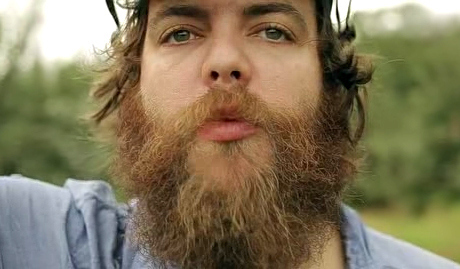
���I’m the only person you know, Mickey. Period.���
When a voice on a radio offers a sudden alternative, things begin to fracture in the way they do as friends grow apart when one decides to settle down, while the other’s happy to amble through life, free of responsibilities. In that sudden possibility, the hope of something else, of a comfort and security that could never be found in the repetitive days of baseball pitching and Womble-esque scavenging, it’s no longer enough to merely connect with a less-isolated past through a mix CD and a bottle of perfume. As the stakes get raised, things escalate into a series of incredibly tense scenes, and a final act where they become truly trapped, not just with the situation, but with the eventual mundanity of all horror. The finale, a long, single-take stretch, mostly dialogue-free but for the howling dirge of the brain-hungry mob, is phenomenally powerful and brilliantly acted, with one moment that, even on a second watch, dropped the pit of my stomach straight down to Hades.
It’s honestly hard to comprehend that this was made for $6,000. More than any genre, there are a ton of cheapie zombie flicks, as it’s a comparatively easy route to a first film, if you’ve thought up some cool kills in lieu of a decent screenplay. Most film-makers’ idea of trying new things in a Z-flick extends no further than the assortment of wacky implements being stabbed into the heads of the undead, or which locations can be boarded up and splattered with gore. Even in the big-budget Hollywood realm, everyone sticks to the confines of a haggered genre, throwing money, test screenings and reshoots at reels that lack in any innovation. The Battery is the ultimate triumph of creativity and gargantuan lead balls over lazy bullshit and clich��, and at no point would it be out of place against any film on this, or any list. It looks great, sounds great, it’s funny — the ‘Put ‘em on the Glass‘ scene — uplifting, moving, brave, and in one drunken dance sequence, contains the most foot-stompingly joyful thing in cinema this year. All for $6,000. 1/31,666th of World War Z‘s budget, not even counting the probable $100m in promotional costs. But it’s not here because of the low budget. I’m not measuring movies against each other, pound-for-pound, like fantasy MMA fights. It’s here in spite of it; it’s here because it’s the best, most inspiring movie of the year. Go see it.
And there we have it. As is tradition, let’s close out with Gen Ip’s always-superb video love-letter to the year in cinema.
***
If you’re now thinking “If only I could somehow show my appreciation” or “Does this Millard gentleman have further works I might explore?” then you’re in luck. My books are available on Amazon UK and Amazon.com for a nominal fee, and if you don’t have a Kindle, Amazon have a free app.


My Top 20 Movies of 2013 – The List: Part 2
Previous: 2013 Preamble — 2013 List: Part 1
2012: The Preamble — Top 20 Part I — Top 20 Part II
2011: The Preamble — Top 20 Part I — Top 20 Part II
2010: The Preamble — Top 10
2009: Top 10
Refn has made himself at home on these lists, and this year’s entry is yet another divisive film that’s currently causing the words “Right on, Millard,” or “Look at this pretentious fuck-nut,” to be spoken inside your head. While Drive took a while to find its critics, after contrary bells got mad that people liked it, this one was inspiring angry derision at its première, albeit at Cannes, a setting which trades only in grand gestures of walkouts or standing ovations that go on until the heat death of the universe.
Only God Forgives is dedicated to Alejandro Jodorowsky, which is fitting of such a trance-like piece, where silent characters slowly drift between migraine-lit scenes like they’re part of a dream. Everything’s laced with a soporific slowness that adds to the tone of unreality, in a world cloaked beneath artificial light. When they’re not obscured in shadow, characters are bathed in dull reds, like they’ve yet to wash away the blood from past wars, while Bangkok’s streets are a parade of sickly yellows. You barely see daylight more than a handful of times. The film’s early stretches almost play like a silent movie, with Refn further paring things down from the monosyllabic Drive to bare-bones minimalism. A near-mute Gosling tip-toes through what’s an essentially a simple story of dominoing revenge, though it’s his nemesis, an unstoppable, unsmiling, and unassuming human Terminator, that leaves the biggest mark. Karmic retribution incarnate, and wielding a sword of vengeance, his slow walk, the gentle squompf of his slip-ons, is the film’s reductive Imperial March. Kristin Scott Thomas, Ma Baker by way of a genetically engineered megabitch, injects an impotent, Oedipal bent to Gosling’s problems, as she mourns for the son who should have lived, the better-respected, better-hung brother to useless Gosling and his four-inch flopper.
The cloud-like dispersion of about ten minutes plot and dialogue into ninety adds to the neon rabbit-hole effect, and the otherwise sleepy pacing makes the violence, including a genuinely horrific torture sequence, all the more jarring, like being awoken by a scream. Only God Forgives does feel like a dream, but the kind you might have if you passed out in an alleyway behind a Soho fuck-parlour, the night filled with sounds of a broken sign buzzing above your head, and the wet thuds of distant fist-fights and bored prostitutes being fingered on a stack of mouldy cardboard.
A film that’s rooted in the hopeless, backwards grasp at faded youth spins on an emotional meta-weight, as the Cornetto Trilogy draws to a close with a crow-footed, thin-haired Simon Pegg. World’s End‘s tale of the grim acceptance of time’s unstoppable march, of friendships that dissolve as people move on isn’t just the experience of the characters, but the audience too, who’ve made the journey from SoTD to Hot Fuzz, to now, and is much more affecting for it. When Shaun came out, I was a penniless writer, trying desperately to find success amid a succession of empty, miserable days, and now, almost a decade on, well… let’s talk about you instead, eh?
The World’s End‘s spiritual logline is ‘You can never go home’, tackling that experience of returning to old haunts and realising that they, and the people inhabiting them, have intangibly changed, in a vague way of being “off” somehow, while you still feel like you did at nineteen. Edgar Wright and co. take this innate human experience and filter it literally, through Invasion of the Body Snatchers paranoia, in a typically funny, flashy, and feelings-heavy film. The charming Frost/Pegg chemistry is present and correct, albeit neatly role-reversed, and the action sequences are caught halfway between a videogame, and the way a drunk would remember it all going down, with pro wrestling moves, and Nick Frost using bar stools like Hulk fists.
Pegg’s Gary King is like those people we all know, who flourished back in the days when social standing was determined by haircuts or being good at football, but with grey, adult lives that made so few new memories, schooldays are grimly fresh in their minds. His rage at the excruciating limbo of adulthood, where you feel you’ve been sold a lie; exciting beginnings that never begin, fulfilling futures that didn’t show up; it all resonated really, really strongly with me. For some reason. These periods are easily revisited, even unintentionally, with sense-memory time-travel, like the Stone Roses songs that farted out of King’s tape-deck. Sometimes you doze off and have a cruel snatch of a dream that puts you right back there. You’re at your first job, or back in the sixth form, and you feel it; that hope, and all the possibilities; things you didn’t even realise you felt at the time, but now they’re gone, and you’re 34, broke, falling asleep in the bath to flashes of a time when you felt like you had a life awaiting you, and the only thing that stops you opening your fucking neck with a bread knife is knowing how badly your mum would take it. Anyway, great film.
In a previous piece on here, I spoke about the term ‘Hauntology’ — think, the innate creepiness in the visuals of the past; brown wallpaper and public information films of 1970′s Britain — and A Field in England has one of the most overpowering senses of hauntology in many a year. There’s something inherently unsettling about that Civil War era, of Matthew Hopkins putting innocent women to the stake, and crop failure ascribed to the meddling hand of the Devil himself. In a time period where modern religion has yet to sweep away Pagan earth-worship with superstitions of its own, it’s a distinctly British mysticism tackled by Field, of ancient nature and countryside, and hallucinogens that grow underfoot, where Pan stalks between stone circles, prancing his cloven feet down ley lines.
Such motifs make for a floppy-hatted sibling to the Brit folk-horror of Wicker Man or Blood on Satan’s Claw, though it’s less implicitly a horror film, than a tale that becomes all the more horrifying, through an array of trippy, grubby visuals and an increasingly disconcerting tone. Military drumbeats pulse like the heartbeat of the earth, and characters stand posed in silent visual tableaux, with outstretched hands crooked like buckled figures from medieval tapestries. There are moments in Field that feel like those hypnagogic flashes as you jerk awake from a vivid dream, off-angle and at uncertain distance, the filmic equivalent of the old hag sitting on your chest in the dark. While onscreen depictions of drug use usually resemble Martin Fowler’s fish-eye lens LSD trip in the laundrette, Field‘s hypnotic ten-minute hallucinatory sequence feels like someone’s fucked a broken kaleidoscope into your third eye, and there are points where your senses implore that you turn away, back to the real world, just for a second, before it properly breaks your brain. That scene alone would be a brave piece of film-making to test any audience, but the ease in which it slots into the film as a whole is a testament to the conviction of cast and crew.
That’s not to say it’s a film without humour, as there’s plenty in the interplay between the bumbling, bickering group, and the comedic spine holds firm even as things lurch to some very disturbing places. In particular, a scene where, following some unholy, unseen shrieks of torment, Reece Shearsmith emerges from a tent, is one of those sequences that will wrap itself to your psyche like a wet sheet, until you’re beneath the soil. Unbelievably unsettling, startling, and mesmerising, Ben Wheatley allows it to play out in a way most films would have pulled back from, forcing us to witness the full horror, with no narrative sofas to hide behind. And that dogged death-grip on experimental images and amorphous ideas is A Field in England in a single, haunting nutshell.
The Lords of Salem is the Rob Zombie of Devil’s Rejects, as opposed to the Halloween remakes, and as someone who always works better with his own material, it’s the perfect melding of artist and subject matter — a horror film about a haunted record. People give Sheri Moon flack for only appearing in her husband’s films, but in her toughest role to date, it’s a flawless performance of a slow descent into madness. There’s a suffocating quality to Heidi’s (Moon) spiralling condition, as she becomes further and further adrift, degenerating into a strained, worn presence, sleepwalking down a path like a beaten, lost dog finding its way back home, with each sleepless night and terror-filled day further dulling her — and our — sense of reality.
Shining-style title cards denote the passing of the days, sliding us down towards inevitable doom, and the whole film is coated in an incredible sense of dread, lurking just over your shoulder and holding its breath when you do. With creeping, silent zooms on the ‘empty’ apartment at the end of the hall, and numerous poo-making jump-scares, this is Zombie at his most frightening; his day-glo visuals — the lure of a red room that brings to mind Corman’s Masque of Red Death; hairy, giant man-beasts — layered with an awful foreboding. As with the Devil’s Chord, the idea of inherently Satanic music is an idea deeply bedded in occult folklore, but one that’s weirdly unexplored in film. One thing I loved, as art within a story rarely lives up to its fictional billing, is that the four-note dirge is super unsettling for real. As a director who’s always made great choices when it came to marrying music with image, Zombie’s use of Venus in Furs and The Velvet Underground’s All Tomorrow’s Parties will change how you hear these, honestly, already pretty fucking creepy songs forever.
After years of tweenage, CW makeovers, Lords makes witches scary again, and here they’re primal creatures, their naked, sagging bodies caked in filth, cackling and unrepentant, even as they burn. Meanwhile, the less brazen modern-day coven — Judy Geeson, Dee Wallace and Patricia Quinn — are clearly having a fucking blast, chewing the scenery only as a precursor to gobbing it straight at the lens, and to its core, this is a story of feminine power. The men of Salem are relegated to the dark recesses of the background, where even Bruce Davison’s detective work is clearly fated for uncovering exposition, helpless to stop the horrible events that’ve been set into motion.
Typically with Rob Zombie, the cast is filled with horror icons and forgotten faces; most excitingly, They Live‘s Meg Foster, whose pale blue eyes saw her playing a lot of blind people in the eighties, and who’s terrifying, in a role which sees her, at 64, bravely full frontal nuddy for all of her many scenes. Although, with lines of dialogue like Geeson’s “Have you come here to stick your nosey cock inside her head and fuck her brain, Mr. Matthias?” it’s no mystery why actors would want to work with him. Things come to a head with a Satanic reunion gig that looks like Hieronymus Bosch’s take on a Spencer Tunick shoot, and as we end up in a place we, and Heidi knew we must, crushing final shots remind us just how far she’s fallen.
There’s this idea that old people aren’t proper people, that they’ve always been old. White, ghostly hair; face drooping downward in innocent folds; fingers gnarled and perpetually cold. It’s hard to connect the shuffling vulnerability with who they were; someone who loved, someone who fought and fucked, who did and felt any of the things ‘real’, young people feel, right now. In Killing‘s subjects, it’s instinctive to be similarly conflicted, when faced with smiling elderly men who’ve tortured and killed thousands, and are revered as heroes.
So much has been said about this film that it’s hard to know what to add, except that all the hyperbole is fully deserved. It’s a thoughtful, uncomfortable, and intense mediation on what it means to be human, and presents us with characters who are irredeemable, with a narrative arc that can only ever be about emotionally bringing themselves to account. The Act of Killing‘s method is to involve its participants in cinematic recreations of their past. Everyone wants to be a movie star, even genocidal killers, and unable to refuse the lure of the camera, they eagerly play up to the roles they’ve painted themselves, in decades of retelling stories from their Death Squad adventures. As gangsters and gun-slinging heroes, framed within a school-play, Hollywood aesthetic, they get to retell the oft-traded war stories that have become a twisted version of “tell us what you did in the war, grandpa” — like the general who brags about how many twelve-year-old girls he raped, back in the good old days. At one point, during a bizarre musical dance sequence, Anwar Congo, a man who personally strangled over a thousand people to death with a length of piano wire, is presented with a medal by the ghost of one of his victims. For a documentary that examines humanity through the meta-medium of film, and film within a film, its denouement is essentially a re-take of its opening, leading to a scene where an old man dry-heaves on a rooftop, in one of the most emotionally devastating commentaries on the human condition ever committed.
I was mildly terrified going in to The East, as it contains many single elements I already love, all mushed together in one place, like a surprise birthday party that’ll either be the best night of my life, or end with me sobbing in a toilet cubicle. Alexander Skarsgård. aka hunky Eric Northman, for whom I’d fling aside my hetero-status in a priapic heartbeat; Ellen Page, recipient of a billion unanswered tweets; Brit Marling, a permanent fixture on these year-end lists and major talent-crush, and Marling’s collaborator Zal Batmanglij, a pairing who sat atop last year’s Top 20 with the extraordinarily brilliant Sound of My Voice . It’s a relief to say that, unlike the entirety of my adult life, I was not disappointed.
As with Elysium, The East is a timely tale of corporations bleeding the world dry, as the whole, broken system crumbles around our food-bank queuing feet. The East, the group, are a more socially-minded Project Mayhem, anarchist eco-vigilantes whose ‘jams’ are a halfway squat-house between terrorism and protest. Their hits on multinationals have the set-ups of a heist movie, and it’s a sweet hybrid of the intrigue of Sound of My Voice, with the exhilaration of a thriller. The East keeps things taut, both in tension and scope, and as you’d hope for from Marling/Batmanglij, there are plenty of those — now trademark — electrifying moments of creativity. In particular, now three movies in to her writing work, the straight-jacketed dinner party scene had me sagely nodding out a “Classic Marling…” in the way that an offensively racially stereotyped alien would cause you to exclaim “That’s our Lucas!” In their hands, the hook of an undercover agent, the constant threat of discovery, becomes a creaking balloon of tension, riding on the back of a hedgehog.
The collection of street-kid characters never resorts to dreadlocked stereotypes, with not a Guy Fawkes mask in sight, and Skarsgård exudes a quiet (and dreamy) magnetism, in a leadership role which could have fallen into broader Manson/Durden strokes in a lesser piece. It’s a film that functions as a much-needed escapist fantasy for the helplessness of 21st century life, as you’re forced to choose between heating and groceries, while student protesters get kettled by riot police on the rolling news, and feeling like you want to do something; but what? Should I start a revolution from my cramped, cold little flat? It’s always a good sign when a movie leaves you inspired to inhabit its world, like how Karate Kid saw me waxing on and off, or Raiders had me wrenching the plug from the bathtub and swinging it like a whip until it hit me in the eye, and my mum confiscated it. Following The East, I had a craving to ride the rails, stop showering, and take down The Man, even though I’m likely to be homeless for real next year anyway. But it also made me want to write something as exciting and invigorating, so I peeled off the balaclava and fired up Final Draft instead.
As a commentary on the attribution of blame, in the wake of random acts of violence, being lain at the feet of art; more specifically movies and videogames, The Dirties is, unfortunately, always going to be timely. It’s also always going to set a lot of people’s nerves on edge, by logline alone. A found footage movie about the planning of a school shooting? Tough sell. At this point, we’re almost exactly a year out from Sandy Hook, and always within reach of a similar incident, but this isn’t the dunderheaded provocation of Elephant, as we follow a pair of socially outcast highschool friends, and film-buffs, making a movie about a bully-slaying school shooting that seems to be turning into a documentary.
Matt Johnson (as ‘Matt’, further blurring the lines) sees life as a movie where he’s the star-auteur, always performing, or thinking how to best frame himself for the imaginary audience, effectively treating the universe as a Matt Johnson Joint. I’ve known people like that, who talk as though the cameras are rolling, in fake-sounding, faux-deep dialogue where giving up a hobby becomes “That’s just not who I am anymore…” before staring off wistfully into the middle distance. They’re imitating the grand emotions they saw once on Dawson’s Creek, while being completely hollow and unformed as an actual entity. Although, that’s a little off-point, as Matt’s a frightening character because of the nonchalant manner with which he discusses blowing his fellow students’ skulls off. Is he joking? Is he for real? Everything’s so fucking ironic these days, with people afraid of getting caught being earnest — an entire generation of walking memes — that neither his ‘accomplice’ nor the audience are sure where he stands, at least until the end. Parlaying that modern disease into a self-aware school shooter, borrowing Catcher in the Rye from the school library “cos it’ll be funny,” is a genius move, especially when any would-be maniac is fully aware — often, as a motive — that infamy awaits, with 24 hour news using body-counts like a high score, and where any actual docu-footage would be ghoulishly judged on the Dutch camera angles and soundtrack choices.
The movie-within-a-movie is a superbly observed student film, with surface-level emulation of heroes like Tarantino, but enough loving creativity to make you feel bummed out when the sneering cool kids don’t get it, and to empathise with its sociopathic director. Everything’s littered with cinematic references, from a superb set of end credits, to the Feeney call from Boy Meets World, and the concept of a found footage movie edited by an obsessive movie nerd allows for a lot of meta-foolin’ with the genre, like the moment we pull back to the editing desk from a heartfelt montage to be asked “Is this too cheesy?” Director, co-writer and lead, Matt Johnson is terrifyingly talented and terrifyingly young, and The Dirties is the bravest, most fucking blistering début in recent memory. Other than that hilarious time he was deemed too fat to fly, this is by far the best thing that Kevin Smith’s ever been associated with.
Schooldays are a live combat situation, with enemies on all sides, and friends who’ll stab you in the back just to clamber onto your corpse and stand that little bit higher on the social ladder. Everyone’s jostling for position like chimpanzees, with Alpha sports lads and popular girls sat like the general on the hill, while the gawky and the last-picked huddle together in the trenches, fearful of giving away anything that can be used to destroy them — rumours that you trod in shit that see you referred to as ‘Poo on the Shoe’ for the next decade. I Declare War follows a hot afternoon’s war game between two teams of children, as they navigate the battlefield of childhood, complete with its WMD-sized emotions, and with approaching adolescence looming on the horizon like an enemy sniper. It’s Lord of the Flies through Stand by Me, all seen through the eyes of its young participants.
The stick-and-twine weapons are as real to us as they are to them, and characters are armed with real guns and grenades that transform play into legitimate combat, scouting through the forest and long grasses like Vietnam. Paint-filled water balloon grenades explode, leaving debris and a deafened whistle, and bullets shatter tree bark as kids crouch for cover. The sense of leaking imagination heightens the whole film, with one character who pictures himself with Cyclops-style superpowers, blasting shit to smithereens with eye-lasers, and another who holds imaginary, cloying conversations with a crush. This child-soldier aesthetic provides all the tension and sudden, visceral shocks and shouts of “Nooooooo!”of a real war movie. And that’s what this is, as much as Platoon or Saving Private Ryan.
Rules are laid out with a nifty, child-like animated sequence, as PK, undefeated master strategist, obsessed with military history and Patton, leads a team against the arrogant and unhinged Skinner, a pubescent general in aviator shades, who’s staged a military coup. All the war archetypes are present; nervy pacifist, double-act, mysterious loner, and a female character who’s one of the film’s many strengths. In movies about gangs of kids, the token girl has a tendency to be comparatively smart and mature, but War‘s is as pleasingly flighty and childish as the rest, albeit gifted nuclear-powered skills of bewitchment and manipulation amid a bunch of hormonal boys. The all-child cast adds a fresh angle to aspects of a genre that exists almost entirely on worn clichés, daring each other to eat dog dirts, and bringing new takes on stereotypical war-film dialogue.
“What are you doing after the war?”
“You’re coming over and eating pizza, and we’re watching a movie.”
The gunplay is actually a small part in a war of emotions, as blacks and whites get smeared into the greys of “all’s fair…” and the raising stakes bring issues like collateral damage and torture into the mix. Character motivations lay in rumours and lunch room chatter, in broken friendships, jealousies and crushes; all of these at play on the canvas of war, where the slights of adolescence can be seized for revenge, with past wounds that run as deep and traumatising as anything John Rambo howled over; wounds that will freshly bleed all over the dirt floor before it’s time to go home. I’m just gonna say it — this is the best war film since Full Metal Jacket.
Critics — I refuse to use the word haters; I’m not Kanye West — may accuse me of being lazy in such a shockingly (or at this stage, mercifully) brief write-up, especially for the second best film of the year, but Upstream Color is not your normal film. For one thing, like Stoker, I don’t want to peel back any of the wrapping paper before you get your hands on it, and also, it’s completely fucking impossible to try and categorise or surmise, without me hammering out a 10,000 word dissertation about how densely incredible it is. It’s been almost a decade since Shane Carruth’s previous work, Primer, a film that people are still trying to unravel, and Upstream will similarly be subject to endless dissection and interpretation as we all grow old, hunched and erectionally dysfunctional.
With themes of identity and loss, sense memory and life-cycles, from the startling visual opening, you’re immediately hooked into an ethereal mystery, bleeding out into all the facets of what it means to be you. It’s everything you hoped for from Carruth, and a million times more, although Amy Seimetz’s staggering performance shouldn’t get lost amid the confirmation of one man as the most unbelievably talented and unique auteur of his generation. He’s got the potential to become a mythic figure, eschewing press or social media, and film-biz convention, to emerge from hermitude and gift the world his beautiful works, and though I hope it’s not another ten years before we see the next film, honestly, you could watch this a hundred times and still be entranced.
The zombie genre is as dead and rotting as Bub himself, having lurched itself into the pop-culture mainstream somewhere between pirates and onesies, as studios continue to churn out tedious films and awful, inexplicably popular TV shows. What else is there to be done with the zombie? You’d think nothing. The actual answer: a ton. Though The Battery is closer in spirit to Kelly Reichardt’s Old Joy than a Romero film, it’s by far the best zombie flick of the post-28 Days modern era. What’s more, it was made for $6,000, which is less than Will Smith’s urinal cake budget on After Earth.
Writer, director, and leading man, Jeremy Gardner is a slacker-survivalist completely at home in the apocalypse, with all the freedoms of employment and hygiene it brings. Picture Ron Swanson’s ostracised adult son; a sweaty, crumb-chinned man you’d want at your back when the shit went down, and the polar opposite to life-buddy Mickey, who shuts himself away behind a pair of headphones, ensconced inside the pre-chaos tunes of a security blanket discman, while trailing the zombie-kill scorecard with a fat zero. Thrown together by the disaster, they live out their days like you did your childhood summers, exploring, mucking about, and idly killing time before sunset. To invoke the phrase ‘buddy comedy’ would be massively underselling The Battery‘s appeal. It’s a thoughtful treatise on the male psyche, with quiet moments that reel us in to the characters’ slow, drifting malaise as they tramp through abandoned back-roads. As a double-hander, its strength lies in the believable relationship of two men who only have each other, which, despite the stumbling threat of flesh-eaters, has settled into regular beats of social interaction. Like 2010′s Monsters, it’s the human condition via genre-film, as with Gardner’s Ben badgering his buddy to take that step and kill his first zombie, like college kids teasing their virgin buddy to be a man, before locking them in a closet with a hooker until its done.
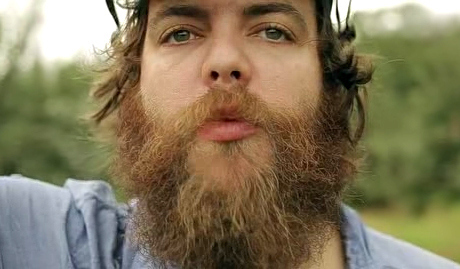
“I’m the only person you know, Mickey. Period.”
When a voice on a radio offers a sudden alternative, things begin to fracture in the way they do as friends grow apart when one decides to settle down, while the other’s happy to amble through life, free of responsibilities. In that sudden possibility, the hope of something else, of a comfort and security that could never be found in the repetitive days of baseball pitching and Womble-esque scavenging, it’s no longer enough to merely connect with a less-isolated past through a mix CD and a bottle of perfume. As the stakes get raised, things escalate into a series of incredibly tense scenes, and a final act where they become truly trapped, not just with the situation, but with the eventual mundanity of all horror. The finale, a long, single-take stretch, mostly dialogue-free but for the howling dirge of the brain-hungry mob, is phenomenally powerful and brilliantly acted, with one moment that, even on a second watch, dropped the pit of my stomach straight down to Hades.
It’s honestly hard to comprehend that this was made for $6,000. More than any genre, there are a ton of cheapie zombie flicks, as it’s a comparatively easy route to a first film, if you’ve thought up some cool kills in lieu of a decent screenplay. Most film-makers’ idea of trying new things in a Z-flick extends no further than the assortment of wacky implements being stabbed into the heads of the undead, or which locations can be boarded up and splattered with gore. Even in the big-budget Hollywood realm, everyone sticks to the confines of a haggered genre, throwing money, test screenings and reshoots at reels that lack in any innovation. The Battery is the ultimate triumph of creativity and gargantuan lead balls over lazy bullshit and cliché, and at no point would it be out of place against any film on this, or any list. It looks great, sounds great, it’s funny — the ‘Put ‘em on the Glass‘ scene — uplifting, moving, brave, and in one drunken dance sequence, contains the most foot-stompingly joyful thing in cinema this year. All for $6,000. 1/31,666th of World War Z‘s budget, not even counting the probable $100m in promotional costs. But it’s not here because of the low budget. I’m not measuring movies against each other, pound-for-pound, like fantasy MMA fights. It’s here in spite of it; it’s here because it’s the best, most inspiring movie of the year. Go see it.
And there we have it. As is tradition, let’s close out with Gen Ip’s always-superb video love-letter to the year in cinema.
***
If you’re now thinking “If only I could somehow show my appreciation” or “Does this Millard gentleman have further works I might explore?” then you’re in luck. My books are available on Amazon UK and Amazon.com for a nominal fee, and if you don’t have a Kindle, Amazon have a free app.


December 16, 2013
My Top 20 Movies of 2013 ��� The List: Part 1
Previous: 2013 Preamble.
2012: The Preamble — Top 20 Part I — Top 20 Part II
2011: The Preamble — Top 20 Part I — Top 20 Part II
2010: The Preamble — Top 10
2009: Top 10
As of now, Prisoners inexplicably sits in the IMDB top 250. Inexplicably, you say? But it’s here on the list? That it is, and for the first hour or so, it’s the tense, weighty thought-piece about the ethics of torture, and the lengths to which desperate men will go that you might have expected going in. Hugh Jackman, a man who spends his life preparing for emergencies, suddenly finds himself in one, and it’s a scorching performance as he unravels, grasping a fistful of straws so violently they’re spluttering the safe word. Likewise, Jake Gyllenhaal, a high-strung IED of twitches and blinks, is fantastic. Though there’s nobody who wouldn’t find their head in their hands at the sight of Terrance Howard reaching for a trombone, audiences should feel safe in the knowledge they’re witnessing a solid, tense drama.
But on the winds, is that…? It is. The distant dong of a broadly-painted warning bell, tolling in the clich�� of a child-minded, probable-nonce, Paul Dano, which is dangerous performance territory (see: Daniel Mays in Red Riding). Thankfully, Dano keeps things just the right side of the Deacon-line, and Prisoners becomes an interesting mystery, continually expanding outwards like all good mysteries should, before, as we were forewarned by our brain-damaged harbinger, it all starts to go a bit wacky.
Firstly, we meet a vigilante paedo-priest, and then kiddy-fiddler #3, who’s identified when he’s clocked by Gyllenhaal lecherously caressing a stuffed rabbit at a candlelight vigil. It’s such a pantomimey, Lifetime Movies reveal, that you’re one close-up away from a drool-slavered chin and leaky boner-tent. It’s around this point that Prisoners becomes a condensed (yet still over-long) mini-series, tipping a giant sack of improbable distractions into your lap to buy more time, with a sea of red herrings and jarring supervillains. Once we meet a bad guy who’s exactly how Nolan’s Batman films would portray the Riddler, we glance down to find our cinema seats have morphed into coconut mats, whizzing on a rapid, spiralling descent into spectacular dumbness. It’s all so gloriously and unexpectedly stupid, like Zodiac penned by someone who fended off middle-act writer’s block by hoovering a load of PCP into their lungs. The only way to watch is to revel in the bizarre combination of massive craziness and powerhouse acting, from two leads who were quite clearly cast by accident, instead of the material’s rightful players, Nic Cage and a sweaty John Cusack.
The first V/H/S was a big disappointment. A modern take on the Amicus or Tales from the Crypt horror portmanteau, using found footage, is such a killer idea. The problem with anthology films, particularly those with multiple directors, is uneven quality, with weaker segments dragging everything down, such was V/H/S. Ditto, this year’s ABCs of Death, a 26-chapter anthology, featured a tiny handful of excellent shorts bobbing atop a giant stew of shite like poo-tainted Halloween apples. Thankfully, barring the framing device and rather dismal first skit, V/H/S/2 is absolutely brilliant.
Adam Wingard’s opener plays like Black Mirror dry-humping J-Horror The Eye, and is passable, but once that’s out of the way, it’s genuinely hard to pick a stand-out. ‘Safe Haven‘, co-directed by The Raid‘s Gareth Evans, brings to mind everything from the People’s Temple to Heaven’s Gate, and the scary bits of survival horror videogames. It also features the most extraordinary — and real — trail of dangling snot, which caused me to thank all the gods I don’t believe in that it wasn’t in 3D. ‘A Ride in the Park,’ by the people behind The Blair Witch Project, takes a GoPro strapped to the head of an infected cyclist as a means to discover a new, gruesome, and wildly fun way of tackling zzzzzzzombies in 2013. The short running time keeps it exceptionally tight and fast-paced, as something that probably would have outstayed its welcome as a gimmicky feature-length. Finally, Jason ‘Hobo with a Shotgun‘ Eisener (who incidentally, was behind one of ABCs of Death‘s truly cracking shorts) directs ‘Slumber Party Alien Abduction,’ the title of which is plot inference enough; another taut little piece, although the final shot, a found footage clich��, is probably a step too far. Even though they release these things in the middle of the year, I do love a modern horror series taking up the annual franchise mantle, in the way that — the rubbish — Saw films did on Halloween, and the anthology is a great way to introduce new genre directors, or give existing names a chance to play around with an idea that wouldn’t have legs, or a greenlight, as a full movie of its own. When it works, like it did this time, it’s a huge amount of fun.
Amid endless debate about the skewed balance between rich and poor, with braying, egg-faced automaton, David Cameron preaching a ‘permanent austerity’ while literally sat on a golden throne (���We’re all in this together!���), Elysium doesn’t so much predict the future, as daub a sci-fi veneer on the present. Blomkamp paints a living, retching, future-slum world, unlike the empty lens flares and Poundland Blade Runner locales of your Len Wisemans; a world beset by the pertinent issues of now. As space border-hoppers — desperately seeking a better life, or the simple right of healthcare for their kids — try to sneak rocket-ships past immigration, the Haves, cloistered on a floating utopia, preach a sneering Not in My Back Yard.
Elysium marries these BBC Question Time topics with the kind of whomp-ass action sequences you’d hope for when the director of District 9 meets a buffed up, radioactive Matt Damon. Blomkamp’s design work has always been gorgeous, and it stands out all the more in cinematic areas that have long become homogenized into lazy standards. Futuristic guns have all been the same since Aliens, and robots could stagger unnoticed between any number of 21st century sci-fi flicks, but Elysium‘s weaponry ‘n droids evoke the kind of seat-leaning wonder you felt as a kid. There’s a real ‘weight’ to the effects, a lack of which is a huge problem in CG-heavy action films where you’re asked to connect to characters who’ve been pasted onto a PS3 cutscene. Action sequences here feel bruising; a handheld docu-feel, with dashes of ostentatious flash and beautifully used slow-mo. Another important piece of any genre puzzle is a repulsive villain, and Sharlto Copley’s shark-eyed merc is so magnificently dickish, you struggle to connect him as the same guy behind the bumbling, tragic Wikus. As confirmed by Elysium, future generations may view District 9 like those stories of miners finding living toads encased inside ancient rock. In hindsight, that film unearthed a pair of fully-formed talents, who could run and somersault as soon as they tumbled out of the womb, while others spend entire careers dragging themselves from film to film on hands and knees.
Eli Roth’s brand is the suffering of na��ve first-worlders on carefree jaunts in foreign lands. From the Hostels to his upcoming cannibal flick Green Inferno, Roth bloody loves it when happy-go-lucky tourists pay the flesh-price for their cultural crimes. I hope his next film involves gap-year Christian missionaries building a school in Africa, laying down a single brick and taking Instagram snaps of themselves holding cute little black children like props, before they’re wrongly accused of being witches and hunted down by rioting, hyena-owning, machete-welding gangs. Wait. That’s actually great. Ah fuck, and now I need to write it.
Anyway, he’s back again, co-writing, and also acting, and as with all his stuff, the pitch is like something an excited teenage boy would babble into your face between wanks; ���So there’s an earthquake, right? In a crazy foreign country where everyone’s either a hot woman or a prick. But get this — the earthquake brings down the walls to the local prison, and all the insane criminals get out!��� Talk about a can’t miss. And it doesn’t. Just like Machete Kills, which was also fun, it’s rammed hemorrhoid-tight with inventive gore and bits that make ���Ohh shit!��� fly out of your mouth as you look around for someone to high five. The chaotic madness of a violent earthquake, with rioters, looters and horny prisoners running loose, is the exploitation-flick perfect storm, and this is the rare example of a killer premise that translates from napkin to screen.
Aftershock is part of this year’s perplexing destruction of of my previously infallible IMDB-based movie-choosing system, which is crumbling like a twat-filled Chilean club in a natural disaster. Unless there’s a specific reason I want to check it out, as a rule, I avoid anything rated below a 5, which is a guarantee of stinkage. As much as people always seem to be wrong, en-mass, their numerical judgements average out pretty well, and for poor movies, there’s no hiding in the IMDB rating. Or there wasn’t. Aftershock, currently a 4.8, sits here on the Top 20, and The Last Exorcism Part II sports a 3.9. Sub-four, but I still loved it. Has my judgement become impaired? Are you reading, open-mouthed, a list of terrible choices, with the same bewilderment I feel watching shrieking audiences fall for Robbie Williams’ wanker-at-a-wedding, ���All this? For me?!��� faux-humble bullshit act, time and again? No matter. Aftershock is a ton of fun, and had I waited, I may have been put off by the low score and bad reviews, but now you’ve read this, you too will avoid that fate, unless you’re a dunce. Oh, and stay away from the trailer, which is stupidly spoily.
Big, blockbuster action movies fill me with dread. The digital age has replaced thoughtfully choreographed set-pieces of action past with a bunch of random scenes where people narrowly miss stuff. Seriously, look for it. Since computers made it possible for characters to safely run through corridors or war-torn cities, while crumbling walls juuust miss falling on their heads, or buses thrown by giant monsters are duck-and-rolled under at the last possible inch, action movies have been shit. You’re never not aware it’s all just some dude in a green-screen warehouse side-stepping left like a Knightmare contestant, ���Yeah, we’ll draw God’s CG turd narrowly missing you.��� Roland Emmerich’s 2012 was an endless parade of ���Oh no, gonna get hit by that falling building… Phew, narrowly missed! But now the road’s collapsing behind us… blimey! Narrowly missed!��� and last year’s utterly excretable The Hobbit was even worse. Peter Jackson’s trousers get real tight when stuff gets narrowly missed. Thankfully, none of the awful blights of modern actioners are present in Pacific Rim.
As required by the monstrous budget, this is a way broader movie than the oddball-arthouse feel of Del Toro’s usual fare — so broad that a spluttering English character literally says ���By jove!���– but one of his greatest strengths is rooting the fantastical in real, relatable human emotion. For such a huge, blustering movie, and following endless summers of noisy tedium, where they’re determined to not have you give a shit about any of the characters, it’s a near-revelation. Sure, they’re giant CG robot-suits, but the stellar character work has you invested in the fights. Fights, incidentally which are both fun, and where you can see what’s going on, rather than it just being shapes hitting other shapes.
Military fetishism has become another tired old trope, but Rim‘s designs inspire awe and excitement in a way Avatar never did, imbuing it with a sense of scale that draws you further into the world, instead of thinking ���That must have took ages to render,��� while briefly glancing across from Redtube. The mechs, and their alien adversaries, feel like a futuristic take on Universal’s classic movie monsters; American Gladiators a hundred feet tall, each with respective pro wrestling-style names and trademark finishing moves. Like with Gilliam or Herzog, Guillermo del Toro’s one of those filmmakers whose unique voice shines through whatever he does, and despite the summer blockbuster budget, Pacific Rim is every bit as him, and every bit as brilliant, as the films that preceded it.
Every year, there seems to be one film that I don’t want to talk about for fear of giving away its secrets. I knew nothing about Stoker, so watching was like hopping aboard a magical mystery tour, fearful of ditching over a cliff amid a cloud of my fellow passengers’ death-farts, but thankfully spending most of the journey mumbling to myself ���I don’t know where this is going, but I like it.���
Written by the guy with the tats from Prison Break, who sent it out under a pseudonym to let it live on its own merits, it’s an incredibly confident first screenplay. An intricately constructed puzzle of overlapping pieces, visually, it’s phenomenally inventive, and Matthew Goode is perfectly cast as the worldly, exotic uncle of a small, broken family whose genetic trait seems to be ethereal detachment. Even Nicole Kidman, whose immovable, porcelain urinal of a face couldn’t find a way to emote through all the botox if she was being bitten in half by a shark is well placed, as the emotionally distant mother to Mia Wasikowska’s India. Interplay between Goode and the phenomenal Wasikowska is underlaid by a dozen different layers of coiled tension, like the oppression in the air before the sudden strike of a violent storm, and with a predatory undercurrent suggesting that should the masks slip, either could pounce — in love or war — at any moment. While Stoker is a fantastic, mesmerising puzzlebox of a film, I don’t think there’s ever been a less-needed final few minutes. The ending feels like it was tacked on by another director, and is the antithesis of the seething subtlety that makes the film as a whole so strong.
Although he’s one of those prolific auteur types, Steven Soderbergh usually leaves me cold. His back catalogue makes for a terrible gap in my film-nerd armoury, barring that one where Gina Carano kicks Fassbender right in his lovely big william, so what better time to start getting into his work than after he’s announced his retirement? Behind the Candelabra could almost be a vampire story. Liberace/Lee is something of an ageless figure, rendered immortal by a maxed-out level of fame, and veiled beneath wigs and plastic surgery. Matt Damon’s Scott, meanwhile, is hand-plucked from normality into Lee’s world, and enormous mansion, until he’s eventually replaced by a younger model, the way his predecessor was, and released back into the wild, irrevocably changed into what Lee made him. So far, so Vlad.
It’s a leisurely feel, sauntering through the years with no real plot beyond the building marital ennui, and giving spacious, gaudily-decorated room for the characters and their relationship — ���Brother. Father. Lover. Best friend.��� — to breathe. It’s funny, warm, and utterly riveting, and more than pretty much any film this year, you buy into the two characters and their relationship in a way that almost makes you forget about Michael Douglas proclaiming himself King of Cunnilingus. Matt Damon, a 43-year-old portraying a teenager, wears Hollywood’s most impressive aging-down yet, and as Liberace himself has become shorthand for personal excess, all Ric Flair robes and hot tubs, Candelabra provides a perfect level of of sumptuous glitz.
He’s a complicated figure; more than just a daylight Nosferatu operating on a cyclical system of ���you’re only as old as the man you feel���; and Douglas imbues him with a believable level of charm. His Liberace stage performances require the word fabulous to be broken up with two hyphens, while the more tragic aspects of the character beneath the toupee are as crushing to the audience in their inevitably as they must have been to Scott. Another tragedy is that a pair of Oscar-worthy performances will go unrecognised as such, with Behind the Candelabra unable to secure a theatrical release in the US because two fellas having a bit of a kiss and cuddle is too much for the tender stomachs of America’s Christ-loving homophobes.
As the existence of comic characters no longer depends on whether the network that airs the sitcom in which they live decides to renew for another season, Partridge is one that can, and will, live on in various mediums and formats for years, or decades to come. Like Kenny Powers or Ron Burgundy, Alan’s part of our cultural folklore, with his quotes and verbal tics ingrained into our British braincells like primitive man’s fear of fire and loud noises. Over the years, he’s gotten so fleshed out, that different to, say, cries for Ghostbusters 3 so we can catch up with Peter Venkman, when we do get to meet Alan once in a while and see where he’s at, it’s more like bumping into an old colleague. Albeit a colleague who left under circumstances best described as ‘unclear’, and who’s startled by your over-enthusiastic ‘hi!’ as they’re browsing the Blu-ray rack in Morrisons.
As such, Alpha Papa feels like another natural extension of Partridge, rather than the days when sitcoms took to the big screen for a 90 minute Spanish holiday. As a film version should, it further extends its world, taking us out into Norwich, and the wilds of Cromer pier, and adding yet more meat to the bones of its lead and supporting players. Alan becomes more interesting as he gets older, with Coogan now the perfect age to portray a character who’s become more and more defined by the breakdown he was always inevitably headed towards. Post-Dundee Alan is a mess of neurotic impulse and second-guessing, forever choking down panic as his arms mentally windmill back from the wobbling edge of the psychological precipice, fearing he’ll tumble down into a relapse.
Alpha Papa is densely packed, without a single syllable or piece of physical movement going to waste, filled with lines, background jokes and vocal intonations that creep up with the stealth of a sweet smelling blow-off if they didn’t catch you right away, like a spade to the chin. Every piece of dialogue is quotable, slotting right into the library of very funny, very Alan lines of previous works, and the soundtrack — Roachford’s Cuddly Toy; the theme to Ski Sunday – is so on-point, it’ll become as iconic to comedy fans as one of Tarantino’s cinematic playlists. Thankfully for a big screen outing, the stakes are kept perfectly Partridge, with a siege at a local radio station still fittingly movie-sized, without venturing into White House Down world-saving. One scene even gifts us the credit of ‘Armed Mangina Officer’, which may trump Threads‘ famous ‘Woman Who Urinates Herself (uncredited)’. It’s often a terrifying prospect when beloved TV characters make the jump to film, but you leave Alpha Papa relieved and happy, with bad guts from laughing, and excited at the prospect of what Alan Partridge will be like at 60, 70, and 80.
Generally, low-budget horror clasps your wrist in its skeletal fingers to drearily walk you down one of two forking paths; ninety minutes of noisy slash-by-numbers, or panties-clad women being bothered by ghosts. Praise the Pit then, for Jug Face, a film that’s rooted in atmosphere, and the hard-set rules of its wildly original mythology. Establishing its tone right from the chalk-drawn, lore-setting opening titles, the story centres on a community of backwoods folk, isolated from the rest of the world, with their own rules and sacred traditions, and a religion focussed around the worship of a big hole in the ground — The Pit. The Pit, the all-knowing, silent deity looms over every scene and decision, kept happy with human sacrifices; offerings determined when a Pit-possessed potter sculpts a face jug in likeness of the chosen one.
Lauren Ashley Carter’s Ada is an outsider in a whole community of them, doe-eyed and incredibly striking (I needn’t worry about The Pit — I’ve already fallen into your beautiful eyes! Jug Face works as an inbred sister-piece to The Woman, with overlapping cast and crew, and Carter and Sean Bridgers, father and daughter in the latter, have a sweet relationship of feelings left unspoken, him the vulnerable village oddball at the end of pointing fingers once suspicion starts to fly, and her, the cause behind it all. Larry Fessenden, the man whom vaguely familiar character actors labelled as That Guy bow to as their king, shows why he should be afforded more screentime, while Sean Young gives a terrifying Hicksploitation take on the ardent religious mother, particularly during an aggressive vaginal inspection.
The production design is evocative of all the good ol’ brotherfucking locales of cinema past; a timeless rust and decay, with jam-jar moonshine and grimy hoe-downs, and the face jugs themselves are really unsettling, though not enough to stop me from wanting one of my own. Most interestingly, this isn’t an ���is it or isn’t it?��� mystery, as The Pit is established as real from the very beginning, rather, it’s an inventive mirror for unthinking, blind faith, as they defer their lives to a deity moving in mysterious, violent ways; like praising a God who cures cancer from a baby he also saw fit to fill with tumours. Those arbitrary interpretations of random events, in Jug Face‘s world, spawn from the literal breaking of commandments. The Pit heals because It’s kept happy with the sacrifices, and It’s mad because It’s been disobeyed. As an allegory for religion, it’s an audaciously blunt choice to have God be an actual empty hole.
Harold Camping has a lot to answer for. If not for 2011’s non-Rapture, then this year’s cinescape would be a very different, less doomy place. The day itself made for pretty great entertainment, if you happened to be watching the Camping church webcam as the hours ticked on, like I was. During their last hours on Earth, waiting to be sucked into the sky, Camping’s followers fielded phone calls that evolved from prankish mocking to cutely sympathetic in tone as it became clear Jesus was busy washing his beard or something. The church office was manned by an increasingly dejected elderly man, who began by confidently insisting that Gabriel’s trumpet would parp any time now, before gradually slumping into a figure not unlike a child in a raincoat looking up at the kitchen clock and realising that weekend dad had broken yet another promise. Finally, the webcast cut to pre-recorded hymns, and two years later, roughly the time it takes to bring a movie from conception to theatres, cinema screens of undestroyed planet Earth played It’s a Disaster, Hell Baby, Best Friends Forever, Rapturepalooza, The World’s End, and the second best of them all (always the Danny McBridesmaid), This is the End.
Post-Curb Your Enthusiasm, that thing of celebrities playing heightened versions of themselves where they’re rude or drugged-out has become a go-to, either as a way out of typecasting, or a final embracing of it (or, in many cases, a lazy pitch line. ���I play myself, but I’m a dick!���) The ensemble cast play up to preconceived notions, casting James Franco as the pretentious weirdo, Seth Rogan the amiable stoner, and Danny McBride the psychopath you might think him to be, had you never seen Kenny Powers out of character. Jay Baruchel’s struggle as the outsider friend, now stuck with an LA crowd of Hollywood douches as huge-cocked hell-demons rampage outside, functions as a backbone of the story most people can identify with, albeit on a scale that usually doesn’t involve Satan’s jizzing throbber.
This is the End is everything an R-rated comedy should be, using the freedom to take things as far as they should naturally go, rather than tedious Movie 43-style testicles, turds, and people getting blowies off their mum. It’s also gloriously silly in, well, most places, with Danny McBride and James Franco’s lengthy, improvised argument about cumming over each other a particular highlight. Like with everything he’s ever been in, McBride prances away with the movie, like a cat burglar who’s flipping you off as tosses your wedding albums into a sack, and there’s a ton of celebrity cameos that’d be better off not spoiled by you looking them up on the wiki page before you see it. Rogan and Goldberg’s appreciation for risqu��, biblical-themed comedy and heartfelt yet fucked up friendships, combined with their flagrant disrespect for religion makes me think that Preacher, much as I always wanted it for myself, is in safe hands.
***
If you’re now thinking “If only I could somehow show my appreciation” or “Does this Millard gentleman have further works I might explore?” then you’re in luck. My books are available on Amazon UK and Amazon.com for a nominal fee, and if you don’t have a Kindle, Amazon have a free app.


My Top 20 Movies of 2013 – The List: Part 1
Previous: 2013 Preamble.
2012: The Preamble — Top 20 Part I — Top 20 Part II
2011: The Preamble — Top 20 Part I — Top 20 Part II
2010: The Preamble — Top 10
2009: Top 10
As of now, Prisoners inexplicably sits in the IMDB top 250. Inexplicably, you say? But it’s here on the list? That it is, and for the first hour or so, it’s the tense, weighty thought-piece about the ethics of torture, and the lengths to which desperate men will go that you might have expected going in. Hugh Jackman, a man who spends his life preparing for emergencies, suddenly finds himself in one, and it’s a scorching performance as he unravels, grasping a fistful of straws so violently they’re spluttering the safe word. Likewise, Jake Gyllenhaal, a high-strung IED of twitches and blinks, is fantastic. Though there’s nobody who wouldn’t find their head in their hands at the sight of Terrance Howard reaching for a trombone, audiences should feel safe in the knowledge they’re witnessing a solid, tense drama.
But on the winds, is that…? It is. The distant dong of a broadly-painted warning bell, tolling in the cliché of a child-minded, probable-nonce, Paul Dano, which is dangerous performance territory (see: Daniel Mays in Red Riding). Thankfully, Dano keeps things just the right side of the Deacon-line, and Prisoners becomes an interesting mystery, continually expanding outwards like all good mysteries should, before, as we were forewarned by our brain-damaged harbinger, it all starts to go a bit wacky.
Firstly, we meet a vigilante paedo-priest, and then kiddy-fiddler #3, who’s identified when he’s clocked by Gyllenhaal lecherously caressing a stuffed rabbit at a candlelight vigil. It’s such a pantomimey, Lifetime Movies reveal, that you’re one close-up away from a drool-slavered chin and leaky boner-tent. It’s around this point that Prisoners becomes a condensed (yet still over-long) mini-series, tipping a giant sack of improbable distractions into your lap to buy more time, with a sea of red herrings and jarring supervillains. Once we meet a bad guy who’s exactly how Nolan’s Batman films would portray the Riddler, we glance down to find our cinema seats have morphed into coconut mats, whizzing on a rapid, spiralling descent into spectacular dumbness. It’s all so gloriously and unexpectedly stupid, like Zodiac penned by someone who fended off middle-act writer’s block by hoovering a load of PCP into their lungs. The only way to watch is to revel in the bizarre combination of massive craziness and powerhouse acting, from two leads who were quite clearly cast by accident, instead of the material’s rightful players, Nic Cage and a sweaty John Cusack.
The first V/H/S was a big disappointment. A modern take on the Amicus or Tales from the Crypt horror portmanteau, using found footage, is such a killer idea. The problem with anthology films, particularly those with multiple directors, is uneven quality, with weaker segments dragging everything down, such was V/H/S. Ditto, this year’s ABCs of Death, a 26-chapter anthology, featured a tiny handful of excellent shorts bobbing atop a giant stew of shite like poo-tainted Halloween apples. Thankfully, barring the framing device and rather dismal first skit, V/H/S/2 is absolutely brilliant.
Adam Wingard’s opener plays like Black Mirror dry-humping J-Horror The Eye, and is passable, but once that’s out of the way, it’s genuinely hard to pick a stand-out. ‘Safe Haven‘, co-directed by The Raid‘s Gareth Evans, brings to mind everything from the People’s Temple to Heaven’s Gate, and the scary bits of survival horror videogames. It also features the most extraordinary — and real — trail of dangling snot, which caused me to thank all the gods I don’t believe in that it wasn’t in 3D. ‘A Ride in the Park,’ by the people behind The Blair Witch Project, takes a GoPro strapped to the head of an infected cyclist as a means to discover a new, gruesome, and wildly fun way of tackling zzzzzzzombies in 2013. The short running time keeps it exceptionally tight and fast-paced, as something that probably would have outstayed its welcome as a gimmicky feature-length. Finally, Jason ‘Hobo with a Shotgun‘ Eisener (who incidentally, was behind one of ABCs of Death‘s truly cracking shorts) directs ‘Slumber Party Alien Abduction,’ the title of which is plot inference enough; another taut little piece, although the final shot, a found footage cliché, is probably a step too far. Even though they release these things in the middle of the year, I do love a modern horror series taking up the annual franchise mantle, in the way that — the rubbish — Saw films did on Halloween, and the anthology is a great way to introduce new genre directors, or give existing names a chance to play around with an idea that wouldn’t have legs, or a greenlight, as a full movie of its own. When it works, like it did this time, it’s a huge amount of fun.
Amid endless debate about the skewed balance between rich and poor, with braying, egg-faced automaton, David Cameron preaching a ‘permanent austerity’ while literally sat on a golden throne (“We’re all in this together!”), Elysium doesn’t so much predict the future, as daub a sci-fi veneer on the present. Blomkamp paints a living, retching, future-slum world, unlike the empty lens flares and Poundland Blade Runner locales of your Len Wisemans; a world beset by the pertinent issues of now. As space border-hoppers — desperately seeking a better life, or the simple right of healthcare for their kids — try to sneak rocket-ships past immigration, the Haves, cloistered on a floating utopia, preach a sneering Not in My Back Yard.
Elysium marries these BBC Question Time topics with the kind of whomp-ass action sequences you’d hope for when the director of District 9 meets a buffed up, radioactive Matt Damon. Blomkamp’s design work has always been gorgeous, and it stands out all the more in cinematic areas that have long become homogenized into lazy standards. Futuristic guns have all been the same since Aliens, and robots could stagger unnoticed between any number of 21st century sci-fi flicks, but Elysium‘s weaponry ‘n droids evoke the kind of seat-leaning wonder you felt as a kid. There’s a real ‘weight’ to the effects, a lack of which is a huge problem in CG-heavy action films where you’re asked to connect to characters who’ve been pasted onto a PS3 cutscene. Action sequences here feel bruising; a handheld docu-feel, with dashes of ostentatious flash and beautifully used slow-mo. Another important piece of any genre puzzle is a repulsive villain, and Sharlto Copley’s shark-eyed merc is so magnificently dickish, you struggle to connect him as the same guy behind the bumbling, tragic Wikus. As confirmed by Elysium, future generations may view District 9 like those stories of miners finding living toads encased inside ancient rock. In hindsight, that film unearthed a pair of fully-formed talents, who could run and somersault as soon as they tumbled out of the womb, while others spend entire careers dragging themselves from film to film on hands and knees.
Eli Roth’s brand is the suffering of naïve first-worlders on carefree jaunts in foreign lands. From the Hostels to his upcoming cannibal flick Green Inferno, Roth bloody loves it when happy-go-lucky tourists pay the flesh-price for their cultural crimes. I hope his next film involves gap-year Christian missionaries building a school in Africa, laying down a single brick and taking Instagram snaps of themselves holding cute little black children like props, before they’re wrongly accused of being witches and hunted down by rioting, hyena-owning, machete-welding gangs. Wait. That’s actually great. Ah fuck, and now I need to write it.
Anyway, he’s back again, co-writing, and also acting, and as with all his stuff, the pitch is like something an excited teenage boy would babble into your face between wanks; “So there’s an earthquake, right? In a crazy foreign country where everyone’s either a hot woman or a prick. But get this — the earthquake brings down the walls to the local prison, and all the insane criminals get out!” Talk about a can’t miss. And it doesn’t. Just like Machete Kills, which was also fun, it’s rammed hemorrhoid-tight with inventive gore and bits that make “Ohh shit!” fly out of your mouth as you look around for someone to high five. The chaotic madness of a violent earthquake, with rioters, looters and horny prisoners running loose, is the exploitation-flick perfect storm, and this is the rare example of a killer premise that translates from napkin to screen.
Aftershock is part of this year’s perplexing destruction of of my previously infallible IMDB-based movie-choosing system, which is crumbling like a twat-filled Chilean club in a natural disaster. Unless there’s a specific reason I want to check it out, as a rule, I avoid anything rated below a 5, which is a guarantee of stinkage. As much as people always seem to be wrong, en-mass, their numerical judgements average out pretty well, and for poor movies, there’s no hiding in the IMDB rating. Or there wasn’t. Aftershock, currently a 4.8, sits here on the Top 20, and The Last Exorcism Part II sports a 3.9. Sub-four, but I still loved it. Has my judgement become impaired? Are you reading, open-mouthed, a list of terrible choices, with the same bewilderment I feel watching shrieking audiences fall for Robbie Williams’ wanker-at-a-wedding, “All this? For me?!” faux-humble bullshit act, time and again? No matter. Aftershock is a ton of fun, and had I waited, I may have been put off by the low score and bad reviews, but now you’ve read this, you too will avoid that fate, unless you’re a dunce. Oh, and stay away from the trailer, which is stupidly spoily.
Big, blockbuster action movies fill me with dread. The digital age has replaced thoughtfully choreographed set-pieces of action past with a bunch of random scenes where people narrowly miss stuff. Seriously, look for it. Since computers made it possible for characters to safely run through corridors or war-torn cities, while crumbling walls juuust miss falling on their heads, or buses thrown by giant monsters are duck-and-rolled under at the last possible inch, action movies have been shit. You’re never not aware it’s all just some dude in a green-screen warehouse side-stepping left like a Knightmare contestant, “Yeah, we’ll draw God’s CG turd narrowly missing you.” Roland Emmerich’s 2012 was an endless parade of “Oh no, gonna get hit by that falling building… Phew, narrowly missed! But now the road’s collapsing behind us… blimey! Narrowly missed!” and last year’s utterly excretable The Hobbit was even worse. Peter Jackson’s trousers get real tight when stuff gets narrowly missed. Thankfully, none of the awful blights of modern actioners are present in Pacific Rim.
As required by the monstrous budget, this is a way broader movie than the oddball-arthouse feel of Del Toro’s usual fare — so broad that a spluttering English character literally says “By jove!”– but one of his greatest strengths is rooting the fantastical in real, relatable human emotion. For such a huge, blustering movie, and following endless summers of noisy tedium, where they’re determined to not have you give a shit about any of the characters, it’s a near-revelation. Sure, they’re giant CG robot-suits, but the stellar character work has you invested in the fights. Fights, incidentally which are both fun, and where you can see what’s going on, rather than it just being shapes hitting other shapes.
Military fetishism has become another tired old trope, but Rim‘s designs inspire awe and excitement in a way Avatar never did, imbuing it with a sense of scale that draws you further into the world, instead of thinking “That must have took ages to render,” while briefly glancing across from Redtube. The mechs, and their alien adversaries, feel like a futuristic take on Universal’s classic movie monsters; American Gladiators a hundred feet tall, each with respective pro wrestling-style names and trademark finishing moves. Like with Gilliam or Herzog, Guillermo del Toro’s one of those filmmakers whose unique voice shines through whatever he does, and despite the summer blockbuster budget, Pacific Rim is every bit as him, and every bit as brilliant, as the films that preceded it.
Every year, there seems to be one film that I don’t want to talk about for fear of giving away its secrets. I knew nothing about Stoker, so watching was like hopping aboard a magical mystery tour, fearful of ditching over a cliff amid a cloud of my fellow passengers’ death-farts, but thankfully spending most of the journey mumbling to myself “I don’t know where this is going, but I like it.”
Written by the guy with the tats from Prison Break, who sent it out under a pseudonym to let it live on its own merits, it’s an incredibly confident first screenplay. An intricately constructed puzzle of overlapping pieces, visually, it’s phenomenally inventive, and Matthew Goode is perfectly cast as the worldly, exotic uncle of a small, broken family whose genetic trait seems to be ethereal detachment. Even Nicole Kidman, whose immovable, porcelain urinal of a face couldn’t find a way to emote through all the botox if she was being bitten in half by a shark is well placed, as the emotionally distant mother to Mia Wasikowska’s India. Interplay between Goode and the phenomenal Wasikowska is underlaid by a dozen different layers of coiled tension, like the oppression in the air before the sudden strike of a violent storm, and with a predatory undercurrent suggesting that should the masks slip, either could pounce — in love or war — at any moment. While Stoker is a fantastic, mesmerising puzzlebox of a film, I don’t think there’s ever been a less-needed final few minutes. The ending feels like it was tacked on by another director, and is the antithesis of the seething subtlety that makes the film as a whole so strong.
Although he’s one of those prolific auteur types, Steven Soderbergh usually leaves me cold. His back catalogue makes for a terrible gap in my film-nerd armoury, barring that one where Gina Carano kicks Fassbender right in his lovely big william, so what better time to start getting into his work than after he’s announced his retirement? Behind the Candelabra could almost be a vampire story. Liberace/Lee is something of an ageless figure, rendered immortal by a maxed-out level of fame, and veiled beneath wigs and plastic surgery. Matt Damon’s Scott, meanwhile, is hand-plucked from normality into Lee’s world, and enormous mansion, until he’s eventually replaced by a younger model, the way his predecessor was, and released back into the wild, irrevocably changed into what Lee made him. So far, so Vlad.
It’s a leisurely feel, sauntering through the years with no real plot beyond the building marital ennui, and giving spacious, gaudily-decorated room for the characters and their relationship — “Brother. Father. Lover. Best friend.” — to breathe. It’s funny, warm, and utterly riveting, and more than pretty much any film this year, you buy into the two characters and their relationship in a way that almost makes you forget about Michael Douglas proclaiming himself King of Cunnilingus. Matt Damon, a 43-year-old portraying a teenager, wears Hollywood’s most impressive aging-down yet, and as Liberace himself has become shorthand for personal excess, all Ric Flair robes and hot tubs, Candelabra provides a perfect level of of sumptuous glitz.
He’s a complicated figure; more than just a daylight Nosferatu operating on a cyclical system of “you’re only as old as the man you feel”; and Douglas imbues him with a believable level of charm. His Liberace stage performances require the word fabulous to be broken up with two hyphens, while the more tragic aspects of the character beneath the toupee are as crushing to the audience in their inevitably as they must have been to Scott. Another tragedy is that a pair of Oscar-worthy performances will go unrecognised as such, with Behind the Candelabra unable to secure a theatrical release in the US because two fellas having a bit of a kiss and cuddle is too much for the tender stomachs of America’s Christ-loving homophobes.
As the existence of comic characters no longer depends on whether the network that airs the sitcom in which they live decides to renew for another season, Partridge is one that can, and will, live on in various mediums and formats for years, or decades to come. Like Kenny Powers or Ron Burgundy, Alan’s part of our cultural folklore, with his quotes and verbal tics ingrained into our British braincells like primitive man’s fear of fire and loud noises. Over the years, he’s gotten so fleshed out, that different to, say, cries for Ghostbusters 3 so we can catch up with Peter Venkman, when we do get to meet Alan once in a while and see where he’s at, it’s more like bumping into an old colleague. Albeit a colleague who left under circumstances best described as ‘unclear’, and who’s startled by your over-enthusiastic ‘hi!’ as they’re browsing the Blu-ray rack in Morrisons.
As such, Alpha Papa feels like another natural extension of Partridge, rather than the days when sitcoms took to the big screen for a 90 minute Spanish holiday. As a film version should, it further extends its world, taking us out into Norwich, and the wilds of Cromer pier, and adding yet more meat to the bones of its lead and supporting players. Alan becomes more interesting as he gets older, with Coogan now the perfect age to portray a character who’s become more and more defined by the breakdown he was always inevitably headed towards. Post-Dundee Alan is a mess of neurotic impulse and second-guessing, forever choking down panic as his arms mentally windmill back from the wobbling edge of the psychological precipice, fearing he’ll tumble down into a relapse.
Alpha Papa is densely packed, without a single syllable or piece of physical movement going to waste, filled with lines, background jokes and vocal intonations that creep up with the stealth of a sweet smelling blow-off if they didn’t catch you right away, like a spade to the chin. Every piece of dialogue is quotable, slotting right into the library of very funny, very Alan lines of previous works, and the soundtrack — Roachford’s Cuddly Toy; the theme to Ski Sunday – is so on-point, it’ll become as iconic to comedy fans as one of Tarantino’s cinematic playlists. Thankfully for a big screen outing, the stakes are kept perfectly Partridge, with a siege at a local radio station still fittingly movie-sized, without venturing into White House Down world-saving. One scene even gifts us the credit of ‘Armed Mangina Officer’, which may trump Threads‘ famous ‘Woman Who Urinates Herself (uncredited)’. It’s often a terrifying prospect when beloved TV characters make the jump to film, but you leave Alpha Papa relieved and happy, with bad guts from laughing, and excited at the prospect of what Alan Partridge will be like at 60, 70, and 80.
Generally, low-budget horror clasps your wrist in its skeletal fingers to drearily walk you down one of two forking paths; ninety minutes of noisy slash-by-numbers, or panties-clad women being bothered by ghosts. Praise the Pit then, for Jug Face, a film that’s rooted in atmosphere, and the hard-set rules of its wildly original mythology. Establishing its tone right from the chalk-drawn, lore-setting opening titles, the story centres on a community of backwoods folk, isolated from the rest of the world, with their own rules and sacred traditions, and a religion focussed around the worship of a big hole in the ground — The Pit. The Pit, the all-knowing, silent deity looms over every scene and decision, kept happy with human sacrifices; offerings determined when a Pit-possessed potter sculpts a face jug in likeness of the chosen one.
Lauren Ashley Carter’s Ada is an outsider in a whole community of them, doe-eyed and incredibly striking (I needn’t worry about The Pit — I’ve already fallen into your beautiful eyes! Jug Face works as an inbred sister-piece to The Woman, with overlapping cast and crew, and Carter and Sean Bridgers, father and daughter in the latter, have a sweet relationship of feelings left unspoken, him the vulnerable village oddball at the end of pointing fingers once suspicion starts to fly, and her, the cause behind it all. Larry Fessenden, the man whom vaguely familiar character actors labelled as That Guy bow to as their king, shows why he should be afforded more screentime, while Sean Young gives a terrifying Hicksploitation take on the ardent religious mother, particularly during an aggressive vaginal inspection.
The production design is evocative of all the good ol’ brotherfucking locales of cinema past; a timeless rust and decay, with jam-jar moonshine and grimy hoe-downs, and the face jugs themselves are really unsettling, though not enough to stop me from wanting one of my own. Most interestingly, this isn’t an “is it or isn’t it?” mystery, as The Pit is established as real from the very beginning, rather, it’s an inventive mirror for unthinking, blind faith, as they defer their lives to a deity moving in mysterious, violent ways; like praising a God who cures cancer from a baby he also saw fit to fill with tumours. Those arbitrary interpretations of random events, in Jug Face‘s world, spawn from the literal breaking of commandments. The Pit heals because It’s kept happy with the sacrifices, and It’s mad because It’s been disobeyed. As an allegory for religion, it’s an audaciously blunt choice to have God be an actual empty hole.
Harold Camping has a lot to answer for. If not for 2011′s non-Rapture, then this year’s cinescape would be a very different, less doomy place. The day itself made for pretty great entertainment, if you happened to be watching the Camping church webcam as the hours ticked on, like I was. During their last hours on Earth, waiting to be sucked into the sky, Camping’s followers fielded phone calls that evolved from prankish mocking to cutely sympathetic in tone as it became clear Jesus was busy washing his beard or something. The church office was manned by an increasingly dejected elderly man, who began by confidently insisting that Gabriel’s trumpet would parp any time now, before gradually slumping into a figure not unlike a child in a raincoat looking up at the kitchen clock and realising that weekend dad had broken yet another promise. Finally, the webcast cut to pre-recorded hymns, and two years later, roughly the time it takes to bring a movie from conception to theatres, cinema screens of undestroyed planet Earth played It’s a Disaster, Hell Baby, Best Friends Forever, Rapturepalooza, The World’s End, and the second best of them all (always the Danny McBridesmaid), This is the End.
Post-Curb Your Enthusiasm, that thing of celebrities playing heightened versions of themselves where they’re rude or drugged-out has become a go-to, either as a way out of typecasting, or a final embracing of it (or, in many cases, a lazy pitch line. “I play myself, but I’m a dick!”) The ensemble cast play up to preconceived notions, casting James Franco as the pretentious weirdo, Seth Rogan the amiable stoner, and Danny McBride the psychopath you might think him to be, had you never seen Kenny Powers out of character. Jay Baruchel’s struggle as the outsider friend, now stuck with an LA crowd of Hollywood douches as huge-cocked hell-demons rampage outside, functions as a backbone of the story most people can identify with, albeit on a scale that usually doesn’t involve Satan’s jizzing throbber.
This is the End is everything an R-rated comedy should be, using the freedom to take things as far as they should naturally go, rather than tedious Movie 43-style testicles, turds, and people getting blowies off their mum. It’s also gloriously silly in, well, most places, with Danny McBride and James Franco’s lengthy, improvised argument about cumming over each other a particular highlight. Like with everything he’s ever been in, McBride prances away with the movie, like a cat burglar who’s flipping you off as tosses your wedding albums into a sack, and there’s a ton of celebrity cameos that’d be better off not spoiled by you looking them up on the wiki page before you see it. Rogan and Goldberg’s appreciation for risqué, biblical-themed comedy and heartfelt yet fucked up friendships, combined with their flagrant disrespect for religion makes me think that Preacher, much as I always wanted it for myself, is in safe hands.
***
If you’re now thinking “If only I could somehow show my appreciation” or “Does this Millard gentleman have further works I might explore?” then you’re in luck. My books are available on Amazon UK and Amazon.com for a nominal fee, and if you don’t have a Kindle, Amazon have a free app.


December 13, 2013
My Top 20 Movies of 2013 ��� The Preamble
2012: The Preamble — Top 20 Part I — Top 20 Part II
2011: The Preamble — Top 20 Part I — Top 20 Part II
2010: The Preamble — Top 10
2009: Top 10
Even the bears in those fucking Coke ads reckon it doesn’t feel Christmassy until the list goes up. ���Movie blog is coming, movie blog is coming… Always loads’a nob gags…��� As a jaded, bitter grown-up, Christmas is naught but a miserable period of cold reflection; a metaphorical series of gleeful shouts heard through the walls of an empty room; but I still get that nostalgic glow from festive memories of my childhood. Ah, the Sinclair Spectrum magazines, and their bumper-sized December issues. Your Sinclair, Crash and Sinclair User, each with free double-tapes on the front cover, filled with demos and full-length games to get you through that exciting yet agonising week between school breaking up and the day itself. Nothing evokes a feeling of Christmas — at least, Christmas how it’s sold to us — with all of its magic and freedoms, like those thick, glossy tomes and their screeching cassettes. For today’s young generation, my Top 20 film list will fill that slot.
���I remember being a young’un,��� they’ll say, decades from now, ���when Millard, who you’ll better know as the most revered writer, film-maker and love-maker of his generation, was but a simple blogger. Dead inside as I may be now, one can’t help but be filled with festive cheer when thinking back to those lists, like that time he called Nick Love a cunt. Good old Millard. Such a shame what happened to him. Nasty business. Buried in an unmarked grave, to prevent desecrations.���
Anyway, welcome to the fifth annual year-end movie list. As always, let’s begin with the movies, good or bad, that didn’t crack the Top 20, but are still worth discussing, at agonising length.
If you’re looking for endless shots of dreadlocked men huffing smoke like desperate babies suckling on a green breast, then Snoop Dogg‘s Reincarnated is the documentary for you! Weed-obsession aside, it functions as a biography of a guy who’s led a super interesting life, although Snoop stopped being a real person somewhere around the late nineties. Despite his status as a living-cartoon, the story of the night Tupac got shot would make a fine audition piece monologue. I just hope Snoop Lion survives when he’s tagged and released back into the wild.
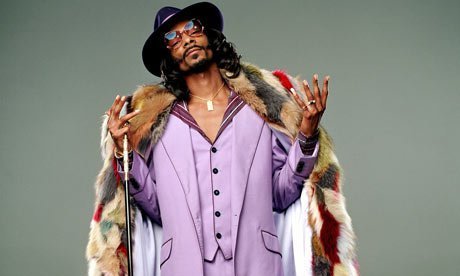
Still haunted by the time he turned into a plane
Modern big-budget comedy is so weird, in that it’s forgotten the instant the lights come back up. What’s the last big studio comedy that made any kind of cultural impact? Borat? The Hangover? Everyone’s fallen into a style of faux-improvised, sub-Will Ferrell riffing, while riding the hard rails of the ���best friends fall out with big ‘home truths’ argument; make up; triumph��� narrative, followed by credit-roll bloopers. Particularly this year, The Heat, We’re the Millers, The Incredible Burt Wonderstone, and The Internship were completely interchangeable in their rote-ness. I enjoyed them at the time — although the latter much less-so — but you’d never pull out the DVDs or throw around quotes. The Heat, at least, was a pleasant surprise, which I put off for ages — see Really Bad Movies section coming up — but kinda loved.
Indie comedies often need the tagline ���Well, their heart was in the right place,��� as with the likes of Ass Backwards, with more good intentions than laughs, or Rapturepalooza, the least of this year’s many films inspired by 2011’s Rapture that never was. Similarly themed Hell Baby was a blast, and a way better take-down of the exorcism genre than even 1990’s Repossessed, possibly the only film to feature both Mean Gene Okerland, and some sweet naked boobies. Hell Baby makes a good double feature with Ken Marino’s Bad Milo, the tale of a man with a murderous, doe-eyed little goblin-creature who lives inside his anus, based on the novel Push by Sapphire. Road movie apocalypse jaunt Best Friends Forever, while not strictly a comedy, is the rare treat of a Kickstarted project that 1) saw the light of day, and 2) was actually worth the donations, while the best non-Top 20 comedy and end of the world flick, It’s a Disaster, narrowly missed the list by a mouse’s bollock. Think a modern Abigail’s Party set during the apocalypse, at a couples brunch for a set of passive aggressive friends, where Julia Stiles starts sobbing because she never got around to watching The Wire. Clear History and Hangover 3 gave us exactly what we expected, respectively a feature length, alternative-dimension Curb, and another decent flick where an Asian guy had a tiny dick and Zach Galifianakis said some funny non sequiturs we laughed at at the time, but are already sick of hearing bellowed in the street at one in the morning by cackling groups of fuckwits coming back from the pub.
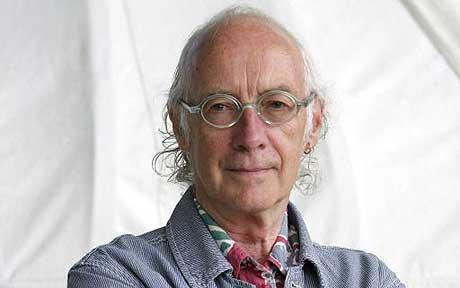
Definitely Larry David.
Another typically middling year for horror could be surmised solely by the Evil Dead remake, which was neither the offensively awful cack-pile we all feared, nor the least bit frightening. We’re too desensitised to gore, and no amount of sicked-up blood or tits being fed into mincing machines will produce anything from audiences but the kind of half-hearted ���Gross…��� one would emit on hearing a frail fart drifting across from the next supermarket aisle. In a world where your listless tweenage daughter has the Lemonparty picture as her home screen, horrors need to rely more on generating an unsettling atmosphere, before rearing up with a good, old-fashioned jump-scare, like the pretty fun The Conjuring did. I figure Diablo Cody’s role in the Evil Dead script was overplayed anyway, as none of the characters died after getting run over by a penny farthing.
The Conspiracy was a blend of underrated 80’s schlock Society and the sort of schizo conspiracy stuff I’ve written about before, albeit with less droolingly aggressive anti-Semitism. That’ll be because the Jews run Hollywood, I guess. Bloody space lizards. Speaking of space (rockin’ segue, Millard), The Last Days on Mars is the year’s second best zombie flick, with the astro-ghouls less terrifying than the helpless, claustrophobic enormity of space, but elevated by Max Richter’s extraordinary score. One of the year’s best horrors, lumbered with a title that plays like a joke about unnecessary sequels, is The Last Exorcism Part II. Part I is one of the most underrated horrors of the last decade, and the follow-up boasts the craziest ���Fuck it, let’s just go for it!��� ending ever. Although, I must confess to being quite severely in love with Ashley Bell, to the point where I even watched a film with the fucking Miz in it, just to sit with my chin clasped betwixt my hands, gently cooing over her lovely, soft red hair like a man with a string of failed CRB checks.
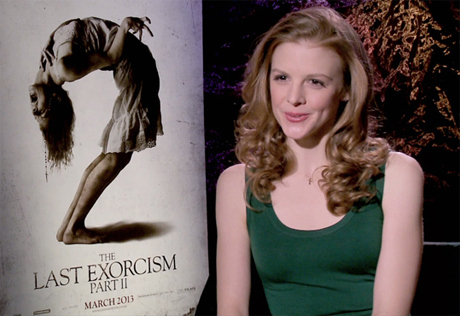
YOU HAVE POSSESSED MY HEART *vomits butterflies over a priest*
As movies with budgets you could dive into like Scrooge McDuck follow their trend of venturing no further than the pre-amble, Star Trek into Darkness was certainly a thing that I saw; a thing of no consequence. I realise fandom over celebrities is nothing new, but the internet has latched on to Cumberbatch and Hiddleston like they’re the last men alive. The endless shrieking over Cummy-B is like Biebermania for women over twenty-five, and his presence in Star Trek subsequently feels like a distracting, of-its-time cameo, like if Psy or Grumpy Cat had shown up as Klingon emissaries. That’s what you like is it, world? Odd-looking Englishmen? Cos I’m right here. Into Darkness did succeed in giving internet-jokers another chance to wheel out their J. J. Abrams lens flare material, as well as keeping me awake at nights with the horrifying prospect of cinema’s shit-arse, Noel Clarke, being cast in the new Star Wars films.
World War Z is another one of those weird pseudo-adaptations where they use nothing of the source material barring the title. A faux-historical take, like the documentaries your old man watches about 911 or the Nazis, with archive footage from various sources — rolling news, security cam, amateur stuff shot by eyewitnesses, talking heads — would have made for a unique take on a tired old genre, and stuck to the book. Instead, Z‘s another generic action film, and you wonder why they bothered throwing option money at Max Brooks in the first place. That said, if Hollywood wants to sling six figures at me to make a Beach Diaries movie where a paedophile saves Thanksgiving, go right ahead. The Lone Ranger was a fun way to spend a couple of hours, which is as good as you can hope for in a movie that has to make back a trillion dollars, and nobody’s emotionally tied to the source material to be outraged, unlike Man of Steel. MoS got a lot right, but as in Max Landis’ video rant, it’s hard not to come away from it bemused by (SPOILERS) how casually Superman ignored the deaths of tens of thousands of innocent people, as he punched Zod through buildings, and stood victorious in the rubble of Metropolis’ like it weren’t no biggie. The Wolverine was better than the first one, while Kick Ass 2 was less obnoxious than its first one, and RIPD was Men in Black meets Ghostbusters meets the time I slipped into a coma.
In a sci-fi marketplace that’s increasingly homogenised, Oblivion had a refreshingly original look, but nothing ruins a film for me these days like the presence of Tom Cruise. As with the wrestling matches of Chris Benoit, or serial pram-botherer Gary Glitter’s fist-pumping anthems, there’s no way to watch Cruise without mentally flashing to that Scientology video where they hang a medal the size of a hubcap around his neck, as a reward for being the best crazy cult member of all the crazy cult members. The acting’s irrelevant, when you know that he’s utterly, utterly insane; a Stepford automaton with a public face of smiles and autographs, but fanatical beliefs that even Charles Manson would describe as ���a bit much.���
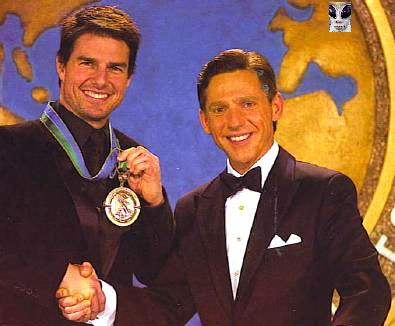
The silver medal went to David Koresh
Speaking of lunatics, albeit the good kind, Vin Diesel, a man of fascinating self-earnesty, is impossible to take seriously. The Furious franchise has become the living embodiment of Diesel’s angel-winged fan photos, with their matter-of-fact execution of wildly elaborate stunts that are less believable than Kanye and Kim’s relationship. But, like the characters do, you just go with it, even when they spend half the film speeding down a runway that seems to stretch the entire length of the planet. Fast 6 leading ladies Gina Carano and Michelle Rodriguez also co-star in that film where I disguise myself as a female inmate to infiltrate a drug gang in a women’s prison, with the cell door slamming behind me as I’m introduced as their new cellmate. I say ���film.��� I mean ���semen-flooded dream.���
The Purge is the worst, most tedious take on an interesting, if very silly premise. Everything‘s legal for one night? So, offscreen, Tales of the City-style, there are people downloading torrented movies, and leaving their dog’s poo poos on the pavement? And more yuckily, rapists and sex-beasts having a swell old time with no comebacks? Either way, the half-arsed near-future social commentary stuff is a narrative false beard on what’s basically a blatant lift of Assault on Precinct 13, but not as good.
I’ll go into the whole ‘narrowly missing stuff’ aspect of modern action films later in the actual Top 20, but Jack the Giant Slayer is two stultifying hours of people in green-screen warehouses ducking, so’s computers can draw in giant’s clubs and feet, and falling rocks, barely missing their heads. So instantly forgettable, I was later found wandering the streets with no idea of who I was, the CG characters had so little emotion, they might as well have left in the tennis-ball-on-a-stick that Ewan McGregor was using for eyeline reference. I expected similar things from Oz the Great and Powerful, an unwanted prequel to one of the two most over-milked properties (the other being Alice in Wonderland), but was weirdly entertained. James Franco’s got an enjoyable half-asleep charisma, and he will appear in the Top 20, not though, for As I Lay Dying, a fine example of his oddball side. Told with a time-shifting split screen, the jumbled narrative feels like the near-death flashback of a drowning man. Meandering and directionless, dialogue is mumbling through beards and broken teeth, and the split screen acts more as a distraction than a storytelling tool, a result of adapting tricksy, non-linear material, but nothing that couldn’t have been better achieved with overlapping dialogue or voice-over. Franco’s presence in this ensemble, front, centre and solo on the poster, comes across like a giant, sleazy wink to camera, wearing a perpetual expression like he’s in on a joke nobody else is.
Ain’t Them Bodies Saints had another arthousey feel, with its gorgeous, autumnal cinematography, and quiet lines disconsolately cowering at the back of the mix, but lacked in making a connection. The Place Beyond the Pines, another ‘almost’, with its unusual triptych structure, deflates with a third act — and protagonist — that’s far less interesting, and hinges on coincidences that stretch credibility too far. For my most disappointing movie of the year, see Wrong, written/directed by the guy behind 2011’s #5 placed Rubber. The Dadaist absurdities that worked in Rubber‘s meta-Hollywood plotting felt forced here, like the whiteboard scrawls of a tiresome class clown being wacky, just because, until it’s literally ���What if turds had memories?!��� Escape from Tomorrow was another let-down. I took pages and pages of notes about Escape, but later dropped the notepad in a bath I was running, resulting in an inky papier mache sculpture, but from memory; shooting without permission in Disney World is super brave, and packed with potential, but muddied by a dozen unfocussed ideas. Plus, it’s an odd choice when the aspirational girl the weary, mentally cracking father spends his weekend eyeing and chasing like it’s their destiny to be together, is clearly so young — fourteen, with braces — that you’re essentially asking the audience to cheer for a man to leave his boring family behind and become a pederast.
Every year, I talk about how I don’t see many bad movies, but this time, I don’t know if I watched more stuff, or was more easily disappointed, but aside from the guff I’ve already talked about, a ton of inconsiderate movie-making helmets wasted a lot of hours that could have been better spent continuing the search for Kony or wondering what gluten is and why nobody will shut the fuck up about it.
I’m first gonna break the golden rule of ���Talk about a film? See it first!��� by mentioning After Earth. Didn’t see it. Didn’t need to. Come on — Will Smith’s character is called Cypher Raige, and the acting skills of his permanently furrow-headed son are only slightly worse than the brain-damaged-Dalai-Lama dribble he spouts on his Twitter account. Incidentally, I wrote more about M. Night’s downfall here if you’re interested. Enjoy Will Smith while you still can, as his Tom Cruise-style exposure as a fucking wacko is surely right around the corner.
I did write a whole bunch about A Good Day to Die Hard, but I cut it for space issues, plus the way the Die Hard franchise has gone is a thing probably better saved for an article all of its own, at some point. Just know that the film was as pitiful as Bruce Willis’ pathetic whiny tantrums during the press tour about tough it is to be a multi-millionaire movie star. Weep me a river, you shithouse.
Directors are often known for their trademarks. For example, Hitchcock had blondes and the Dolly Zoom, while Tarantino loves him some feet and POV trunk shots. Michael Bay’s trademark — the unadulterated HILARITY of gays. Look at them there, mincing about, touching weiners, and being imprisoned and brutalised in Russia; LOL! Pain & Gain is the cinematic equivalent of being chased around a rugby changing room with a lubed-up dildo and repeatedly called a faggot. Dildos, incidentally, are used for comic effect throughout this permanently flexing, closeted fratboy, macho romp. There’s also a little person in a fight scene, for literally no other reason than to have him hauled into the air by Dwayne Johnson while his tiny legs kick against the wall, as Michael Bay guffaws offscreen into a giant mountain of coke. Bay is the worst kind of human, but oddly, even though it’s a homophobic piece of garbage, Pain & Gain is his most watchable film since The Rock (the movie), due to The Rock (the person).

Fucking hilarious isn’t it, Michael Bay? You idiot.
Spring Breakers was an interesting experiment in what would happen if Harmony Korine made a real movie, instead of all the homeless-hipster art student experiments. For all his artsy weirdness, Korine truly has nothing to say. His ‘work’ consists of empty, cobbled together, try-hard shock, with all the meaning of a sullen fifteen-year-old photoshopping bloody tears onto their MySpace profile pic. Art is subjective, yes, but he’s just a boob with a camera; an emperor so naked, you can see his internal organs pulsating as he walks. With an actual narrative and characters, paper-thin as they are, Spring Breakers was the rope with which to hang himself. But he sheltered behind the spectacle of ‘good girl’ actresses parading half-naked, and a gold-grilled, cornrows-sporting James Franco, all functioning as the emperor’s pants, so he’ll continue to be allowed to waste all our time.
As bad as shitty dramas are, there’s something so much worse about bad comedies. Exhibit A(ss): Identity Thief, a joyless trudge through a fuck-awful plot revolving around the absolute worst of all ha-ha, hee-hee archetypes; Comically Grotesque & Wacky Overweight Person. Ha, she’s fat and foul mouthed! Morbidly obese, yet self-confident! Unconventional looking, but still horny! Oh boy, I wonder if they’ll hook up with the film’s other weirdo?! When Melissa McCarthy sang and danced along to the car radio for comic effect, I called 999 to report the director to the police.
Imagine my surprise, dear reader, when Danny Boyle’s latest film didn’t fall apart after the second act. It collapsed after the first. Hiyo! Trance‘s ‘Saw reveal section’ where they show you how smart they are with thumping music, revelations, and replayed shots now presented in a new light, you dumb-dumb, is longer than most movies. Though ���show, not tell��� is the rule, Boyle sits you down for a half-hour Powerpoint presentation of the previous 90 minutes, of a film that only seems to exist to give the world an HD close-up of Rosario Dawson’s shaven labs. It’s probably time everyone admitted that Saint Boyle, he of the Olympics and Oscars is, at best, a middling talent, elevated to God-dom like any Brit who finds success in the only place that matters, big-boy town America, but in truth, the most overrated highly-regarded director of the current era. For other excruciating films whose sole purpose is to rub on their erect nipples during the ���fooled ya!��� finale, see also Now You See Me. Or rather, don’t, as it’s smugger than Ian Hislop masturbating over a video of Ian Hislop fellating himself.
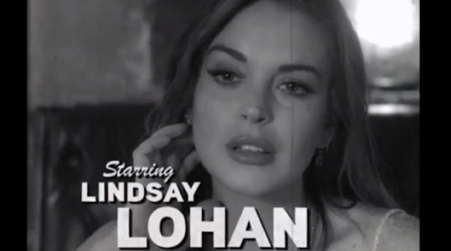
And they say there are no roles for actresses over 60
The Canyons position as one of the most derided films of the year is thoroughly warranted, but not for the reasons chuckle-fuck reviewers would have you think. Yes, Lindsay Lohan gives the performance of a badly-taxidermied elderly starlet, but the main problem, of many, is the script, with the ever-more tedious Bret Easton Ellis trying oh-so-hard to show everyone what a disaffected hedonist he is, as is his gimmick these days. If you’ve seen his schtick, you’ll know the score, as evidenced by how each atom-thin character pointedly over-emphasises the hard K on the word ‘fuck’, as though the audience should be wafting themselves in shock like a southern dame at such vulgarity. Like people always do, they’ll play the ���It’s satire!��� card, but it’s not. It’s just the actual thing. Ellis is a teenage boy, loudly filling a room with proclamations that Godfather 2 is rubbish and Norbit is a masterpiece, and telling the principal to introduce his highschool band as ‘Abortion Bucket and the Anal Rapists’.
���Friends tell me my Twitter account gets me into trouble,��� he says, ���but I can’t help being honest. It’s not my problem if people can’t take the truth…��� Yeah, a fifty-year-old man taking the contrary stance, eyes half-lidded in faux-casual ennui, cigarette deliberately balanced on the bottom lip like he once saw in a photo of James Dean, ���Mr. Rogers was vile. Oh, have I shocked you?��� And he has the gall to blame Lohan for The Canyons’ failure, never mind her stunt-casting was the only reason anybody bothered to watch this shite in the first place. Bret Easton Ellis still thinks himself LA’s L’enfant Terrible, but he’s just a big, silly baby.
And finally, Great Gatsby was the answer to the question ���What if Boardwalk Empire were directed by a prick?���
In annoying cinematic trends, we’re still doing the constant cocking of guns, with safeties clicking off and off and no-seriously-this-time-its-really-off, which is the screen disease that’ll never go away. Also, raving mad Glenn Beck characters continued to provide heavily-handed satire on right-wing media. This year’s number one fad proved to be MMA armbars in fight scenes. Regardless of the setting or time period, every single film put out in 2013 had a sequence where one character cranked on another’s arm like Ronda Rousey; although it did liven up the Princess Di biopic.
Up next, the first half of the Top 20.
***
If�� you dug all these words, it’d be swell if you could check out my books too, on Amazon UK, or Amazon.com. If you don’t have a Kindle, Amazon do a free app. Cheers.


My Top 20 Movies of 2013 – The Preamble
2012: The Preamble — Top 20 Part I — Top 20 Part II
2011: The Preamble — Top 20 Part I — Top 20 Part II
2010: The Preamble — Top 10
2009: Top 10
Even the bears in those fucking Coke ads reckon it doesn’t feel Christmassy until the list goes up. “Movie blog is coming, movie blog is coming… Always loads’a nob gags…” As a jaded, bitter grown-up, Christmas is naught but a miserable period of cold reflection; a metaphorical series of gleeful shouts heard through the walls of an empty room; but I still get that nostalgic glow from festive memories of my childhood. Ah, the Sinclair Spectrum magazines, and their bumper-sized December issues. Your Sinclair, Crash and Sinclair User, each with free double-tapes on the front cover, filled with demos and full-length games to get you through that exciting yet agonising week between school breaking up and the day itself. Nothing evokes a feeling of Christmas — at least, Christmas how it’s sold to us — with all of its magic and freedoms, like those thick, glossy tomes and their screeching cassettes. For today’s young generation, my Top 20 film list will fill that slot.
“I remember being a young’un,” they’ll say, decades from now, “when Millard, who you’ll better know as the most revered writer, film-maker and love-maker of his generation, was but a simple blogger. Dead inside as I may be now, one can’t help but be filled with festive cheer when thinking back to those lists, like that time he called Nick Love a cunt. Good old Millard. Such a shame what happened to him. Nasty business. Buried in an unmarked grave, to prevent desecrations.”
Anyway, welcome to the fifth annual year-end movie list. As always, let’s begin with the movies, good or bad, that didn’t crack the Top 20, but are still worth discussing, at agonising length.
If you’re looking for endless shots of dreadlocked men huffing smoke like desperate babies suckling on a green breast, then Snoop Dogg‘s Reincarnated is the documentary for you! Weed-obsession aside, it functions as a biography of a guy who’s led a super interesting life, although Snoop stopped being a real person somewhere around the late nineties. Despite his status as a living-cartoon, the story of the night Tupac got shot would make a fine audition piece monologue. I just hope Snoop Lion survives when he’s tagged and released back into the wild.
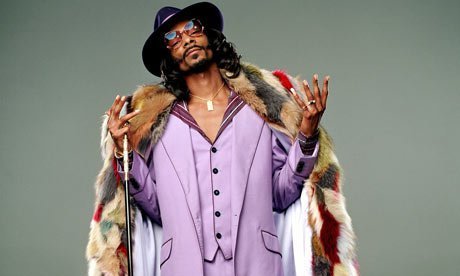
Still haunted by the time he turned into a plane
Modern big-budget comedy is so weird, in that it’s forgotten the instant the lights come back up. What’s the last big studio comedy that made any kind of cultural impact? Borat? The Hangover? Everyone’s fallen into a style of faux-improvised, sub-Will Ferrell riffing, while riding the hard rails of the “best friends fall out with big ‘home truths’ argument; make up; triumph” narrative, followed by credit-roll bloopers. Particularly this year, The Heat, We’re the Millers, The Incredible Burt Wonderstone, and The Internship were completely interchangeable in their rote-ness. I enjoyed them at the time — although the latter much less-so — but you’d never pull out the DVDs or throw around quotes. The Heat, at least, was a pleasant surprise, which I put off for ages — see Really Bad Movies section coming up — but kinda loved.
Indie comedies often need the tagline “Well, their heart was in the right place,” as with the likes of Ass Backwards, with more good intentions than laughs, or Rapturepalooza, the least of this year’s many films inspired by 2011′s Rapture that never was. Similarly themed Hell Baby was a blast, and a way better take-down of the exorcism genre than even 1990′s Repossessed, possibly the only film to feature both Mean Gene Okerland, and some sweet naked boobies. Hell Baby makes a good double feature with Ken Marino’s Bad Milo, the tale of a man with a murderous, doe-eyed little goblin-creature who lives inside his anus, based on the novel Push by Sapphire. Road movie apocalypse jaunt Best Friends Forever, while not strictly a comedy, is the rare treat of a Kickstarted project that 1) saw the light of day, and 2) was actually worth the donations, while the best non-Top 20 comedy and end of the world flick, It’s a Disaster, narrowly missed the list by a mouse’s bollock. Think a modern Abigail’s Party set during the apocalypse, at a couples brunch for a set of passive aggressive friends, where Julia Stiles starts sobbing because she never got around to watching The Wire. Clear History and Hangover 3 gave us exactly what we expected, respectively a feature length, alternative-dimension Curb, and another decent flick where an Asian guy had a tiny dick and Zach Galifianakis said some funny non sequiturs we laughed at at the time, but are already sick of hearing bellowed in the street at one in the morning by cackling groups of fuckwits coming back from the pub.
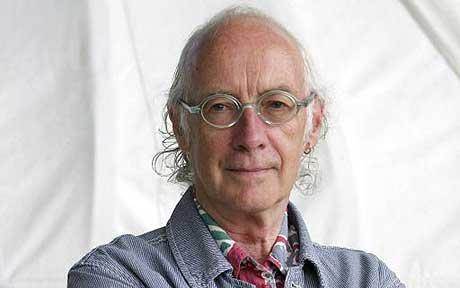
Definitely Larry David.
Another typically middling year for horror could be surmised solely by the Evil Dead remake, which was neither the offensively awful cack-pile we all feared, nor the least bit frightening. We’re too desensitised to gore, and no amount of sicked-up blood or tits being fed into mincing machines will produce anything from audiences but the kind of half-hearted “Gross…” one would emit on hearing a frail fart drifting across from the next supermarket aisle. In a world where your listless tweenage daughter has the Lemonparty picture as her home screen, horrors need to rely more on generating an unsettling atmosphere, before rearing up with a good, old-fashioned jump-scare, like the pretty fun The Conjuring did. I figure Diablo Cody’s role in the Evil Dead script was overplayed anyway, as none of the characters died after getting run over by a penny farthing.
The Conspiracy was a blend of underrated 80′s schlock Society and the sort of schizo conspiracy stuff I’ve written about before, albeit with less droolingly aggressive anti-Semitism. That’ll be because the Jews run Hollywood, I guess. Bloody space lizards. Speaking of space (rockin’ segue, Millard), The Last Days on Mars is the year’s second best zombie flick, with the astro-ghouls less terrifying than the helpless, claustrophobic enormity of space, but elevated by Max Richter’s extraordinary score. One of the year’s best horrors, lumbered with a title that plays like a joke about unnecessary sequels, is The Last Exorcism Part II. Part I is one of the most underrated horrors of the last decade, and the follow-up boasts the craziest “Fuck it, let’s just go for it!” ending ever. Although, I must confess to being quite severely in love with Ashley Bell, to the point where I even watched a film with the fucking Miz in it, just to sit with my chin clasped betwixt my hands, gently cooing over her lovely, soft red hair like a man with a string of failed CRB checks.

YOU HAVE POSSESSED MY HEART *vomits butterflies over a priest*
As movies with budgets you could dive into like Scrooge McDuck follow their trend of venturing no further than the pre-amble, Star Trek into Darkness was certainly a thing that I saw; a thing of no consequence. I realise fandom over celebrities is nothing new, but the internet has latched on to Cumberbatch and Hiddleston like they’re the last men alive. The endless shrieking over Cummy-B is like Biebermania for women over twenty-five, and his presence in Star Trek subsequently feels like a distracting, of-its-time cameo, like if Psy or Grumpy Cat had shown up as Klingon emissaries. That’s what you like is it, world? Odd-looking Englishmen? Cos I’m right here. Into Darkness did succeed in giving internet-jokers another chance to wheel out their J. J. Abrams lens flare material, as well as keeping me awake at nights with the horrifying prospect of cinema’s shit-arse, Noel Clarke, being cast in the new Star Wars films.
World War Z is another one of those weird pseudo-adaptations where they use nothing of the source material barring the title. A faux-historical take, like the documentaries your old man watches about 911 or the Nazis, with archive footage from various sources — rolling news, security cam, amateur stuff shot by eyewitnesses, talking heads — would have made for a unique take on a tired old genre, and stuck to the book. Instead, Z‘s another generic action film, and you wonder why they bothered throwing option money at Max Brooks in the first place. That said, if Hollywood wants to sling six figures at me to make a Beach Diaries movie where a paedophile saves Thanksgiving, go right ahead. The Lone Ranger was a fun way to spend a couple of hours, which is as good as you can hope for in a movie that has to make back a trillion dollars, and nobody’s emotionally tied to the source material to be outraged, unlike Man of Steel. MoS got a lot right, but as in Max Landis’ video rant, it’s hard not to come away from it bemused by (SPOILERS) how casually Superman ignored the deaths of tens of thousands of innocent people, as he punched Zod through buildings, and stood victorious in the rubble of Metropolis’ like it weren’t no biggie. The Wolverine was better than the first one, while Kick Ass 2 was less obnoxious than its first one, and RIPD was Men in Black meets Ghostbusters meets the time I slipped into a coma.
In a sci-fi marketplace that’s increasingly homogenised, Oblivion had a refreshingly original look, but nothing ruins a film for me these days like the presence of Tom Cruise. As with the wrestling matches of Chris Benoit, or serial pram-botherer Gary Glitter’s fist-pumping anthems, there’s no way to watch Cruise without mentally flashing to that Scientology video where they hang a medal the size of a hubcap around his neck, as a reward for being the best crazy cult member of all the crazy cult members. The acting’s irrelevant, when you know that he’s utterly, utterly insane; a Stepford automaton with a public face of smiles and autographs, but fanatical beliefs that even Charles Manson would describe as “a bit much.”

The silver medal went to David Koresh
Speaking of lunatics, albeit the good kind, Vin Diesel, a man of fascinating self-earnesty, is impossible to take seriously. The Furious franchise has become the living embodiment of Diesel’s angel-winged fan photos, with their matter-of-fact execution of wildly elaborate stunts that are less believable than Kanye and Kim’s relationship. But, like the characters do, you just go with it, even when they spend half the film speeding down a runway that seems to stretch the entire length of the planet. Fast 6 leading ladies Gina Carano and Michelle Rodriguez also co-star in that film where I disguise myself as a female inmate to infiltrate a drug gang in a women’s prison, with the cell door slamming behind me as I’m introduced as their new cellmate. I say “film.” I mean “semen-flooded dream.”
The Purge is the worst, most tedious take on an interesting, if very silly premise. Everything‘s legal for one night? So, offscreen, Tales of the City-style, there are people downloading torrented movies, and leaving their dog’s poo poos on the pavement? And more yuckily, rapists and sex-beasts having a swell old time with no comebacks? Either way, the half-arsed near-future social commentary stuff is a narrative false beard on what’s basically a blatant lift of Assault on Precinct 13, but not as good.
I’ll go into the whole ‘narrowly missing stuff’ aspect of modern action films later in the actual Top 20, but Jack the Giant Slayer is two stultifying hours of people in green-screen warehouses ducking, so’s computers can draw in giant’s clubs and feet, and falling rocks, barely missing their heads. So instantly forgettable, I was later found wandering the streets with no idea of who I was, the CG characters had so little emotion, they might as well have left in the tennis-ball-on-a-stick that Ewan McGregor was using for eyeline reference. I expected similar things from Oz the Great and Powerful, an unwanted prequel to one of the two most over-milked properties (the other being Alice in Wonderland), but was weirdly entertained. James Franco’s got an enjoyable half-asleep charisma, and he will appear in the Top 20, not though, for As I Lay Dying, a fine example of his oddball side. Told with a time-shifting split screen, the jumbled narrative feels like the near-death flashback of a drowning man. Meandering and directionless, dialogue is mumbling through beards and broken teeth, and the split screen acts more as a distraction than a storytelling tool, a result of adapting tricksy, non-linear material, but nothing that couldn’t have been better achieved with overlapping dialogue or voice-over. Franco’s presence in this ensemble, front, centre and solo on the poster, comes across like a giant, sleazy wink to camera, wearing a perpetual expression like he’s in on a joke nobody else is.
Ain’t Them Bodies Saints had another arthousey feel, with its gorgeous, autumnal cinematography, and quiet lines disconsolately cowering at the back of the mix, but lacked in making a connection. The Place Beyond the Pines, another ‘almost’, with its unusual triptych structure, deflates with a third act — and protagonist — that’s far less interesting, and hinges on coincidences that stretch credibility too far. For my most disappointing movie of the year, see Wrong, written/directed by the guy behind 2011′s #5 placed Rubber. The Dadaist absurdities that worked in Rubber‘s meta-Hollywood plotting felt forced here, like the whiteboard scrawls of a tiresome class clown being wacky, just because, until it’s literally “What if turds had memories?!” Escape from Tomorrow was another let-down. I took pages and pages of notes about Escape, but later dropped the notepad in a bath I was running, resulting in an inky papier mache sculpture, but from memory; shooting without permission in Disney World is super brave, and packed with potential, but muddied by a dozen unfocussed ideas. Plus, it’s an odd choice when the aspirational girl the weary, mentally cracking father spends his weekend eyeing and chasing like it’s their destiny to be together, is clearly so young — fourteen, with braces — that you’re essentially asking the audience to cheer for a man to leave his boring family behind and become a pederast.
Every year, I talk about how I don’t see many bad movies, but this time, I don’t know if I watched more stuff, or was more easily disappointed, but aside from the guff I’ve already talked about, a ton of inconsiderate movie-making helmets wasted a lot of hours that could have been better spent continuing the search for Kony or wondering what gluten is and why nobody will shut the fuck up about it.
I’m first gonna break the golden rule of “Talk about a film? See it first!” by mentioning After Earth. Didn’t see it. Didn’t need to. Come on — Will Smith’s character is called Cypher Raige, and the acting skills of his permanently furrow-headed son are only slightly worse than the brain-damaged-Dalai-Lama dribble he spouts on his Twitter account. Incidentally, I wrote more about M. Night’s downfall here if you’re interested. Enjoy Will Smith while you still can, as his Tom Cruise-style exposure as a fucking wacko is surely right around the corner.
I did write a whole bunch about A Good Day to Die Hard, but I cut it for space issues, plus the way the Die Hard franchise has gone is a thing probably better saved for an article all of its own, at some point. Just know that the film was as pitiful as Bruce Willis’ pathetic whiny tantrums during the press tour about tough it is to be a multi-millionaire movie star. Weep me a river, you shithouse.
Directors are often known for their trademarks. For example, Hitchcock had blondes and the Dolly Zoom, while Tarantino loves him some feet and POV trunk shots. Michael Bay’s trademark — the unadulterated HILARITY of gays. Look at them there, mincing about, touching weiners, and being imprisoned and brutalised in Russia; LOL! Pain & Gain is the cinematic equivalent of being chased around a rugby changing room with a lubed-up dildo and repeatedly called a faggot. Dildos, incidentally, are used for comic effect throughout this permanently flexing, closeted fratboy, macho romp. There’s also a little person in a fight scene, for literally no other reason than to have him hauled into the air by Duane Johnston while his tiny legs kick against the wall, as Michael Bay guffaws offscreen into a giant mountain of coke. Bay is the worst kind of human, but oddly, even though it’s a homophobic piece of garbage, Pain & Gain is his most watchable film since The Rock (the movie), due to The Rock (the person).

Fucking hilarious isn’t it, Michael Bay? You idiot.
Spring Breakers was an interesting experiment in what would happen if Harmony Korine made a real movie, instead of all the homeless-hipster art student experiments. For all his artsy weirdness, Korine truly has nothing to say. His ‘work’ consists of empty, cobbled together, try-hard shock, with all the meaning of a sullen fifteen-year-old photoshopping bloody tears onto their MySpace profile pic. Art is subjective, yes, but he’s just a boob with a camera; an emperor so naked, you can see his internal organs pulsating as he walks. With an actual narrative and characters, paper-thin as they are, Spring Breakers was the rope with which to hang himself. But he sheltered behind the spectacle of ‘good girl’ actresses parading half-naked, and a gold-grilled, cornrows-sporting James Franco, all functioning as the emperor’s pants, so he’ll continue to be allowed to waste all our time.
As bad as shitty dramas are, there’s something so much worse about bad comedies. Exhibit A(ss): Identity Thief, a joyless trudge through a fuck-awful plot revolving around the absolute worst of all ha-ha, hee-hee archetypes; Comically Grotesque & Wacky Overweight Person. Ha, she’s fat and foul mouthed! Morbidly obese, yet self-confident! Unconventional looking, but still horny! Oh boy, I wonder if they’ll hook up with the film’s other weirdo?! When Melissa McCarthy sang and danced along to the car radio for comic effect, I called 999 to report the director to the police.
Imagine my surprise, dear reader, when Danny Boyle’s latest film didn’t fall apart after the second act. It collapsed after the first. Hiyo! Trance‘s ‘Saw reveal section’ where they show you how smart they are with thumping music, revelations, and replayed shots now presented in a new light, you dumb-dumb, is longer than most movies. Though “show, not tell” is the rule, Boyle sits you down for a half-hour Powerpoint presentation of the previous 90 minutes, of a film that only seems to exist to give the world an HD close-up of Rosario Dawson’s shaven labs. It’s probably time everyone admitted that Saint Boyle, he of the Olympics and Oscars is, at best, a middling talent, elevated to God-dom like any Brit who finds success in the only place that matters, big-boy town America, but in truth, the most overrated highly-regarded director of the current era. For other excruciating films whose sole purpose is to rub on their erect nipples during the “fooled ya!” finale, see also Now You See Me. Or rather, don’t, as it’s smugger than Ian Hislop masturbating over a video of Ian Hislop fellating himself.
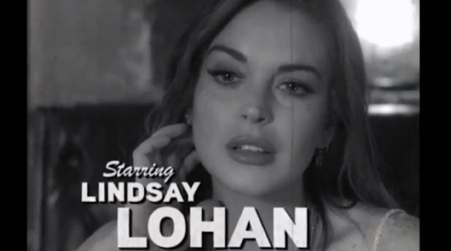
And they say there are no roles for actresses over 60
The Canyons position as one of the most derided films of the year is thoroughly warranted, but not for the reasons chuckle-fuck reviewers would have you think. Yes, Lindsay Lohan gives the performance of a badly-taxidermied elderly starlet, but the main problem, of many, is the script, with the ever-more tedious Bret Easton Ellis trying oh-so-hard to show everyone what a disaffected hedonist he is, as is his gimmick these days. If you’ve seen his schtick, you’ll know the score, as evidenced by how each atom-thin character pointedly over-emphasises the hard K on the word ‘fuck’, as though the audience should be wafting themselves in shock like a southern dame at such vulgarity. Like people always do, they’ll play the “It’s satire!” card, but it’s not. It’s just the actual thing. Ellis is a teenage boy, loudly filling a room with proclamations that Godfather 2 is rubbish and Norbit is a masterpiece, and telling the principal to introduce his highschool band as ‘Abortion Bucket and the Anal Rapists’.
“Friends tell me my Twitter account gets me into trouble,” he says, “but I can’t help being honest. It’s not my problem if people can’t take the truth…” Yeah, a fifty-year-old man taking the contrary stance, eyes half-lidded in faux-casual ennui, cigarette deliberately balanced on the bottom lip like he once saw in a photo of James Dean, “Mr. Rogers was vile. Oh, have I shocked you?” And he has the gall to blame Lohan for The Canyons’ failure, never mind her stunt-casting was the only reason anybody bothered to watch this shite in the first place. Bret Easton Ellis still thinks himself LA’s L’enfant Terrible, but he’s just a big, silly baby.
And finally, Great Gatsby was the answer to the question “What if Boardwalk Empire were directed by a prick?”
In annoying cinematic trends, we’re still doing the constant cocking of guns, with safeties clicking off and off and no-seriously-this-time-its-really-off, which is the screen disease that’ll never go away. Also, raving mad Glenn Beck characters continued to provide heavily-handed satire on right-wing media. This year’s number one fad proved to be MMA armbars in fight scenes. Regardless of the setting or time period, every single film put out in 2013 had a sequence where one character cranked on another’s arm like Ronda Rousey; although it did liven up the Princess Di biopic.
Up next, the first half of the Top 20.
***
If you dug all these words, it’d be swell if you could check out my books too, on Amazon UK, or Amazon.com. If you don’t have a Kindle, Amazon do a free app. Cheers.


November 17, 2013
Preacherman, or “Seth Rogen stole my baby!”
On Never Sleep Again, a documentary about the making of the Nightmare on Elm Street series, producer Jeff Katz relates a story (which he also tells on the Friday the 13th doc), about first hearing talk of a Freddy vs. Jason film as a young fan of both franchises. The very notion saw Katz vowing to do whatever he could to break into Hollywood, so he could work on the film by the time it came to pass, which he did. Preacher is my Freddy vs. Jason, and all the work I’ve hammered out over the last eight years happened with at least one dreamer’s eye glancing towards a future where my foot’s far enough inside that door to be part of the adaptation. As you can see, that’s turned out just swimmingly, posting this as a nobody of some renown.
Regardless, Garth Ennis’ super-violent, wildly blasphemous, and outright amazing comic turns up in movie news stories every few years, as film or TV versions get greenlit, before fizzling out or getting dropped, when studio bosses realise antsy religious protest groups would burn their networks to the ground before the opening credits were done. The virtually unadaptable material would surely only work on HBO (or Starz), which almost happened a few years ago (yes!), albeit show-run by the guy behind the Daredevil and Ghost Rider movies (kill me). I guess there’s Netflix now too, but any network, even cable, that has advertisers to answer to, would never get away with anything but the loosest of adaptations, like Under the Dome or World War Z, where they essentially take nothing but the title. “Stay tuned for NBC’s Preacher, where Jesse Custer, as penance for farting at a funeral, is forced by God to move back in with his parents!”
I truly believe(d) that, like the similarly ‘definitely happening real soon!’ every few months Ghostbusters 3, Preacher would jump between studios and producers forever, but never get past pre-production. Although it was ironically cancelled by HBO, Carnivàle always felt like the closest tonal equivalent to a Preacher show, with its dusty, religious-realism horror, and ‘going home’ episode that was lifted straight from the comic. My own The Ostrich and the Insects from Frantic Planet: Volume II is a hat-tipping homage, in lieu of the Preacher movie that would never, ever work. Considering the Paul Bettany-starring Darwin biopic struggled to find any distribution in the US, what with evolution being such a controversial topic in the 21st century and all, you can forget about Preacher hitting big screens without its central core torn clean out. There’s also no natural ending until the ending-ending, so studios would want what they got with the Ennis-penned screenplay, which is bookended by a bar-side Cassidy telling you the story of his wacky adventures, and ends with Tulip shooting Saint of Killers to death. A movie would be like adapting the entire Game of Thrones books into 120 minutes of screentime.
[image error]
“Coming up after tonight’s Songs of Praise…”
Latest news, out of nowhere, is that AMC have ordered a pilot. AMC, that’s hopeful, right? Breaking Bad and Mad Men (and the awful Walking Dead), and all the bold, gritty storytelling that goes with them; a good fit for Preacher. Well yeah, but for all its brilliance, Breaking Bad was gifted a single, censored ‘fuck’ per season, even blurring one out when it was written on a piece of paper. Obviously mucky language isn’t the be-all and end-all, but every page in Preacher is littered with the kind of mayhem that’s never been seen on television, outside of HBO or Starz, so it needs a home willing to let it tell the whole story, or just not bother.
For me, the news of an actual pilot is the fanboy writer equivalent of watching the football captain take the girl you’ve long loved from afar to the prom; as seen through a telescope from the giant pile of rotting garbage you call home. That said, it’s all going to depend on who’s show-running the thing, which it turns out, is Seth Rogen and Evan Goldberg. Rogen’s tweet about “seven years of hard work” makes me think he’s been chasing the rights since the HBO deal, around the time he started to get that Hollywood pull himself. If it’s going to happen, a pair of fans who’ve got a handle on dark, R-rated comedy, and don’t give a shit about blasphemy, is the best of all possible non-Millard outcomes.
With that in mind, I’m going to do what squealing Tumblr folks do, when they suggest Cumberbatch or Hiddleston for every uncast role in the entire world, and list my dream castings for a Preacher adaptation. Before you accuse me of doing obvious ‘lookalike’ casting, I deliberately chose similar pictures.
Cleans up nice without the tin face, doesn’t he? I always mentally struggled to cast Jesse, but here’s as good a pick as any.
Admittedly, I dream-cast Maggie Grace in everything (most notably in the role of definite-future wife), but in your hearts, you know I’m right.
This might seem like stunt casting, but as soon as it came into my head, I couldn’t picture another Cassidy. I feel like it’s the most obvious born-to-play role since Patrick Stewart and Professor X. Another pretty brilliant suggestion I’ve seen is Matt King, aka Superhans from Peep Show.
6’10”, Texan, a voice like someone throat-fucking a naval mine; we know he’s got that swaggering, measured presence down, and now he’s finally aged into the weathered cragginess required. There isn’t a better pick. There just isn’t.
There’s other roles too, like Joel Grey for Odin Quincannon, Terry O’Quinn as Herr Starr, or Marilyn Manson as Jesus De Sade, but I should probably stop procrastinating and get back to work, so I can be there when Hollywood greenlights the adaptation for Everybody Poops. Any other casting suggestions, drop them in the comments, and if you’re interested in The Ostrich and the Insects, it’s available here, with a bunch of other stories, for a nominal fee, above a flyer I made for it once and might as well show off here, now I’m talking about it and that.


Preacherman, or “Seth Rogan stole my baby!”
On Never Sleep Again, a documentary about the making of the Nightmare on Elm Street series, producer Jeff Katz relates a story (which he also tells on the Friday the 13th doc), about first hearing talk of a Freddy vs. Jason film as a young fan of both franchises. The very notion saw Katz vowing to do whatever he could to break into Hollywood, so he could work on the film by the time it came to pass, which he did. Preacher is my Freddy vs. Jason, and all the work I’ve hammered out over the last eight years happened with at least one dreamer’s eye glancing towards a future where my foot’s far enough inside that door to be part of the adaptation. As you can see, that’s turned out just swimmingly, posting this as a nobody of some renown.
Regardless, Garth Ennis’ super-violent, wildly blasphemous, and outright amazing comic turns up in movie news stories every few years, as film or TV versions get greenlit, before fizzling out or getting dropped, when studio bosses realise antsy religious protest groups would burn their networks to the ground before the opening credits were done. The virtually unadaptable material would surely only work on HBO (or Starz), which almost happened a few years ago (yes!), albeit show-run by the guy behind the Daredevil and Ghost Rider movies (kill me). I guess there’s Netflix now too, but any network, even cable, that has advertisers to answer to, would never get away with anything but the loosest of adaptations, like Under the Dome or World War Z, where they essentially take nothing but the title. “Stay tuned for NBC’s Preacher, where Jesse Custer, as penance for farting at a funeral, is forced by God to move back in with his parents!”
I truly believe(d) that, like the similarly ‘definitely happening real soon!’ every few months Ghostbusters 3, Preacher would jump between studios and producers forever, but never get past pre-production. Although it was ironically cancelled by HBO, Carnivàle always felt like the closest tonal equivalent to a Preacher show, with its dusty, religious-realism horror, and ‘going home’ episode that was lifted straight from the comic. My own The Ostrich and the Insects from Frantic Planet: Volume II is a hat-tipping homage, in lieu of the Preacher movie that would never, ever work. Considering the Paul Bettany-starring Darwin biopic struggled to find any distribution in the US, what with evolution being such a controversial topic in the 21st century and all, you can forget about Preacher hitting big screens without its central core torn clean out. There’s also no natural ending until the ending-ending, so studios would want what they got with the Ennis-penned screenplay, which is bookended by a bar-side Cassidy telling you the story of his wacky adventures, and ends with Tulip shooting Saint of Killers to death. A movie would be like adapting the entire Game of Thrones books into 120 minutes of screentime.
[image error]
“Coming up after tonight’s Songs of Praise…”
Latest news, out of nowhere, is that AMC have ordered a pilot. AMC, that’s hopeful, right? Breaking Bad and Mad Men (and the awful Walking Dead), and all the bold, gritty storytelling that goes with them; a good fit for Preacher. Well yeah, but for all its brilliance, Breaking Bad was gifted a single, censored ‘fuck’ per season, even blurring one out when it was written on a piece of paper. Obviously mucky language isn’t the be-all and end-all, but every page in Preacher is littered with the kind of mayhem that’s never been seen on television, outside of HBO or Starz, so it needs a home willing to let it tell the whole story, or just not bother.
For me, the news of an actual pilot is the fanboy writer equivalent of watching the football captain take the girl you’ve long loved from afar to the prom; as seen through a telescope from the giant pile of rotting garbage you call home. That said, it’s all going to depend on who’s show-running the thing, which it turns out, is Seth Rogan and Evan Goldberg. Rogan’s tweet about “seven years of hard work” makes me think he’s been chasing the rights since the HBO deal, around the time he started to get that Hollywood pull himself. If it’s going to happen, a pair of fans who’ve got a handle on dark, R-rated comedy, and don’t give a shit about blasphemy, is the best of all possible non-Millard outcomes.
With that in mind, I’m going to do what squealing Tumblr folks do, when they suggest Cumberbatch or Hiddleston for every uncast role in the entire world, and list my dream castings for a Preacher adaptation. Before you accuse me of doing obvious ‘lookalike’ casting, I deliberately chose similar pictures.
Cleans up nice without the tin face, doesn’t he? I always mentally struggled to cast Jesse, but here’s as good a pick as any.
Admittedly, I dream-cast Maggie Grace in everything (most notably in the role of definite-future wife), but in your hearts, you know I’m right.
This might seem like stunt casting, but as soon as it came into my head, I couldn’t picture another Cassidy. I feel like it’s the most obvious born-to-play role since Patrick Stewart and Professor X. Another pretty brilliant suggestion I’ve seen is Matt King, aka Superhans from Peep Show.
6’10”, Texan, a voice like someone throat-fucking a naval mine; we know he’s got that swaggering, measured presence down, and now he’s finally aged into the weathered cragginess required. There isn’t a better pick. There just isn’t.
There’s other roles too, like Joel Grey for Odin Quincannon, Terry O’Quinn as Herr Starr, or Marilyn Manson as Jesus De Sade, but I should probably stop procrastinating and get back to work, so I can be there when Hollywood greenlights the adaptation for Everybody Poops. Any other casting suggestions, drop them in the comments, and if you’re interested in The Ostrich and the Insects, it’s available here, with a bunch of other stories, for a nominal fee, above a flyer I made for it once and might as well show off here, now I’m talking about it and that.





